
CAN TECH TACKLE THE Digital Twin Technology could potentially target 80% of world’s carbon emissions April 2023 | supplychaindigital.com Supply Chain Cybersecurity Cyber budgets shrinking despite rising threats G4S Decarbonising of one of the UK’s largest fleets HCL Smart Manufacturing with Industry 4.0 SCOPE 3 DILEMMA? Women in Supply Chain ACCENTURE | SCHNEIDER ELECTRIC | DHL FREIGHT FEATURING:







A BizClik Event Join the Virtual Event Disrupting Procurement & Supply Chain 28TH JUNE 2023 VIRTUAL CONFERENCE
Join the must-see virtual event disrupting procurement and supply chain on the 28th of June 2023.
This year, we are bringing you a solely virtual event, Procurement & SupplyChain LIVE Virtual will highlight the innovators changing the industry. Brought to you by BizClik, Procurement & SupplyChain LIVE Virtual will be held on 28th June 2023, streaming remotely to virtual audiences around the world.
The unmissable event will feature expert keynote speakers, interactive fireside and panel discussions, and more. Do not miss this 1-day deep dive into the disruption and the future of procurement, supply chain and logistics.

Sponsorship Opportunities
Do you want to position your brand in front of thousands of innovators, decision-makers and influencers?


Sponsor Procurement & SupplyChain LIVE to unlock the future of your business, access thousands of potential partners and influence businesses at the highest level.

Both global giants and innovative start-ups alike can discover the ideal platform with easy access to an engaged and active audience.
Contact a member of our team today to discuss sponsorship opportunities.
See you on 28th June 2023.
It’s time for DISRUPTION. GET YOUR PASS SPONSORSHIP
Innovators are paving the way for a more resilient, sustainable, and efficient future. The rules have changed. It’s time for disruption.
▶ Watch our showreel from PROCUREMENT & SUPPLY CHAIN LIVE London 2022







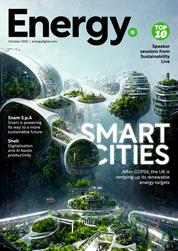















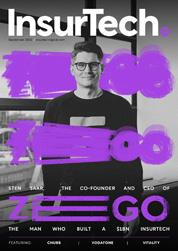



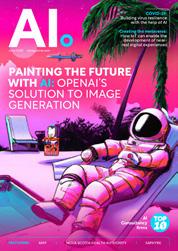

























bizclikmedia.com
Ways to Work With us
We produce Digital Content for Digital People across 20+ Global Brands, reaching over 15M Executives
Digital Magazines


Websites
Newsletters
Industry Data & Demand Generation

Webinars: Creation & Promotion
White Papers & Research Reports
Lists: Top 10s & Top 100s
Events: Virtual & In-Person


Work with us

The SupplyChain Team
EDITOR-IN-CHIEF
SEAN ASHCROFT
CHIEF CONTENT OFFICER
SCOTT BIRCH
MANAGING EDITOR
NEIL PERRY
PROOFREADER
JESS GIBSON
CHIEF DESIGN OFFICER
MATT JOHNSON
HEAD OF DESIGN/


SUPPLYCHAIN LEAD DESIGNER

ANDY WOOLLACOTT
FEATURE DESIGNERS
MIMI GUNN
SOPHIE-ANN PINNELL
HECTOR PENROSE
SAM HUBBARD
REBEKAH BIRLESON
ADVERT DESIGNERS
JORDAN WOOD
DANILO CARDOSO
CALLUM HOOD
VIDEO PRODUCTION MANAGER
KIERAN WAITE
SENIOR VIDEOGRAPHER
HUDSON MELDRUM
DIGITAL VIDEO PRODUCERS
MARTA EUGENIO
ERNEST DE NEVE
THOMAS EASTERFORD
DREW HARDMAN
JOSEPH HANNA
SALLY MOUSTAFA
JINGXI WANG
PRODUCTION DIRECTORS
GEORGIA ALLEN
DANIELA KIANICKOVÁ
PRODUCTION MANAGERS
JANE ARNETA
MARIA GONZALEZ
CHARLIE KING
YEVHENIIA SUBBOTINA
MARKETING MANAGER
KAYLEIGH SHOOTER
PROJECT DIRECTORS
MIKE SADR
CRAIG KILLINGBACK
MEDIA SALES DIRECTOR
JAMES WHITE
MANAGING DIRECTOR
LEWIS VAUGHAN
CEO
GLEN WHITE
THE COMMUNITY
JOIN
+
DR MICHAEL MOORE, PARTNER SOLUTIONS & TECHNOLOGY PRINCIPAL, NEO4J

DIGITAL TWIN TECH HAS SCOPE 3 IN ITS SIGHTS
DIGITAL TWIN TECHNOLOGY IS SUPPLY CHAIN’S BIGGEST GUN IN THE BATTLE TO CONTROL THE SCOPE 3 CARBON EMISSIONS THREATENING OUR NET ZERO AMBITIONS


Increasingly, investors, stakeholders, suppliers and customers are demanding that the organisations in their ecosystem fulfil their obligations on Scope 3 emissions.
It is Scope 3 emissions that hold the key to making serious headway on reaching global net-zero targets by 2050.
These are emissions produced not by the company itself but those from its value chain. For many organisations, such emissions account for 80% of their total carbon footprint.
Trying to control the emissions of tens of thousands of vendors in a multinational’s supply chain can seem like a hopeless task. But there is hope – in the shape of digital twin technology.
As Dr Michael Moore – Partner Solutions & Technology Principal at Neo4j – tells us in this issue, digital twin tech “is the only feasible way of modelling huge, real-world and realtime systems to gain visibility into carbon emissions across extended supply chains”.
Of course, it’s not a silver bullet. Yet. But of all the Scope 3 solutions on offer, it is as close as we are likely to get.

SUPPLYCHAIN DIGITAL MAGAZINE IS PUBLISHED BY © 2023 | ALL RIGHTS RESERVED supplychaindigital.com 7
“Graph-based digital twins use data in a way that can be easily scaled, and they can be as detailed as the reality they capture”
SEAN ASHCROFT sean.ashcroft@bizclikmedia.com
FOREWORD
CONTENTS
UP FRONT
014 BIG PICTURE

How do shops get choc-full of Easter eggs?

020 LIFE TIME ACHIEVEMENT
Uwe Brinks has been CEO of DHL Freight since 2017, a position he assumed after a lifetime of service


024 FIVE MINS WITH Duncan Angove is CEO of Blue Yonder, a leader in digital supply chain transformations and omnichannel fulfilment


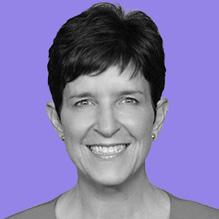






020 024 014
8 April 2023
098
FEATURES
044 SUPPLY CHAIN
Back-door cyber threat leaving Supply Chains exposed


064 LOGISTICS
What does move to clean fuel mean for the sea freight sector?
074 SUSTAINABILITY
Scope 3 is key battleground in the war on carbon emissions

086 TECHNOLOGY
Supply chain needs more women in STEM roles

098 TOP 1 0
Taken from our list of TOP 100 Women in Supply Chain
086 044 supplychaindigital.com 9
064
APRIL 2 023







19TH APRIL 2023 VIRTUAL CONFERENCE Watch our 2023 promo video GET YOUR PASS SPONSORSHIP Join the Virtual Event Disrupting Sustainability A BizClik Event






APRIL 2 023 COMPANY REPORTS 030 G4S Driving towards net zero across its UK vehicle fleet 054 HCL TECH Optimise manufacturing with digital and industry 4.0 supplychaindigital.com 11
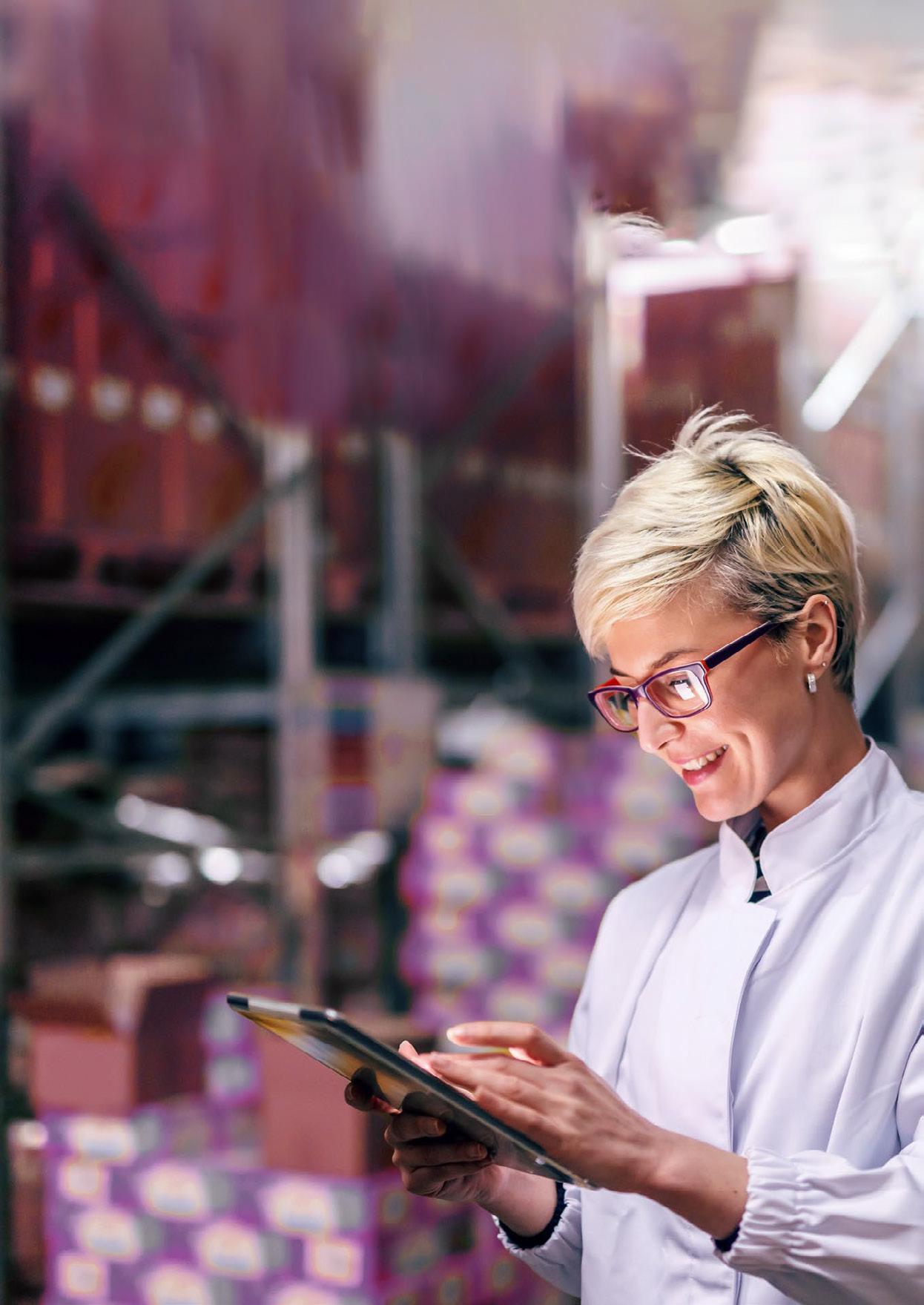


F LU E NT O RD E R MA N A GEM EN T See all your inventor y. Sell more. Deliver profitably. Get a unified, cross-channel view of inventor y data and optimize fulfilment so you can: • Reduce cancelled orders • Decrease deliver y costs • Minimise split shipments • Reduce call center volume Digital Commerce CX: The critical role of accurate inventor y data Get Your Copy
Fluent Order Managements drives real-time business and customer benefits
Jamie Cairns, Chief Strategy Officer at Fluent Commerce, on how its order management platform enhances operational efficiency and customer experience.
Fluent Commerce is a global software company focused on distributed order management. Its cloud-native platform, Fluent Order Management, provides accurate and near real-time inventory data visibility, order orchestration, fulfilment optimisation, instore pick and pack, customer service, and reporting to transform fulfilment into a competitive advantage.

As Jamie Cairns, Chief Strategy Officer at Fluent Commerce explains, the process of managing orders begins with inventory data. “Being able to unify a view of inventory and then syndicating that inventory data out across a range of different channels lets you improve the customer experience,” Cairns comments.
That, in turn, has a range of different operational efficiency benefits, reducing costs by reducing split shipments, cancelled orders, and customer service calls.
As Cairns describes, order management represents an opportunity for retailers and B2B organisations to harness inventory data to provide real-world benefits. One of their recent innovations, Fluent Big Inventory, is about unifying in near real-time those inventory sources, enabling all systems to become inventory aware.
“It is not just about enhancing the order fulfilment process, which is typically what has been the domain of an order management system,” Cairns explains. “It’s about making inventory data available to other systems, like search, as well and ultimately being able to personalise search results based on inventory.” With changing customer preferences in recent years,
brands have had to adapt quickly. As Cairns explains, Fluent Order Management not only provides a robust software-as-a-service platform, but at a lower total cost so businesses can move quickly and meet customer expectations efficiently.
During the COVID-19 pandemic when stores were closed, Fluent Order Management enabled businesses to adapt quickly. “Stores still had inventory and there were huge spikes in online demand,” Cairns explains. “Our customers were able to adapt in a matter of a day to completely change their fulfilment workflows.
“Digital agility is essential,” he concludes. “We are not trying to predict what the future is, but to provide a toolset that allows you to adapt as the future evolves.”
BIG PICTURE
How do shops get choc-full of Easter eggs?
Birmingham, England
Easter is in early April this year, but the shops have been choc-full of Easter eggs for weeks already. It’s big business. The global Easter eggs market size is estimated to be worth an estimated US$4.6bn.
The supply chain cycle for chocolate eggs begins roughly eight months before Easter Sunday. It’s complex, too, with ingredients including cocoa Powder, sugar, fat and oil. After moulding, finishing, decorating and packaging, eggs are stored in refrigerated warehouses, ready to be distributed to outlets including supermarkets, convenience stores, grocery stores and specialty stores.
One of the biggest producers of Easter Eggs is Cadbury’s Bournville factory in Birmingham. The chocolate egg market is worth around £200m a year in the UK alone.

14 April 2023
Cadbury’s Creme Eggs move down the production line

supplychaindigital.com 15
(Getty)
THE BRIEF
EDITORS CHOICE
SUPPLY CHAINS ‘PLAYING CATCH UP ON VISIBILITY TECHNOLOGY’
A Deloitte report shows there’s a long way to go on supply chain visibility, but digital transformation is crucial if firms are to thrive, says FourKites.
CUSTOMER ENABLEMENT ‘SUPPLY CHAIN’S BIGGEST VALUE’ – GARTNER
Gartner survey shows ‘customer enablement’ is most powerful supply chain service but that under a quarter of organisations offer this.
BDO WARNS ‘PEOPLE WANT SUPPLY CHAIN RESULTS, NOT EXCUSES’
Businesses that allow tough market conditions to impact their supply chains face losing customers, who are no longer listening to excuses, warns BDO.
that will increase traction for autonomous
(McKinsey) Factors
vehicles BY THE NUMBERS
READ MORE
MORE Better safety 26% More regulations 43% Better info from OEMs 43% Ability to test 46%
READ
“ECONOMIC UNCERTAINTY IS PUTTING PRESSURE ON BUDGETS AND CYBERCRIMINAL ACTIVITY IS ESCALATING”
James McDowell MD BlueVoyant UK
“ESG HAS BECOME A CRUCIAL MEASURING FACTOR FOR ANY ORGANISATION’S SUCCESS”
16 April 2023
Venkata AVP, Manufacturing HCL
Act now on DPP supply chain laws, Avery Dennison warns
A leading manufacturing figure has warned organisations with supply chains involving Europe to prepare now for the introduction of digital products passports, or they risk losing customers and facing charges of greenwashing. Speaking about the European Commission’s Digital Product Passport (DPP), Lindsey Hermes – Digital Solutions Global Commercial Director with multinational manufacturer Avery Dennison – says the scheme requires that firms make "wholesale organisational change that might take many years”.
She says: “Organisation that do business within the EU will have to completely overhaul supplier relationships to provide the necessary data. DPPs are becoming a reality. The level of product transparency required goes far beyond what is required today.”
MICROCHIP SUPPLY
The European Commission has proposed a comprehensive set of measures to ensure the EU’s security of supply of semiconductors technologies and applications.
ELECTRIC TRUCKS
Uber Freight is to deliver electric-truck haulage with pioneering EV pilot in California, run with help from EV road freight specialist WattEV.
EU RAIL FREIGHT
French rail operator SNCF quadruples traction prices, forcing rail operators to revert to diesel engines, and causing firms to switch from rail to road
WIND ENERGY
The supply chain around wind energy is so complex and heavily regulated that uptake of the clean energy solution is being hampered, says SAP.
W I N N E R S L O S E R S
APR23
supplychaindigital.com 17
A HISTORY 3D PRINTING
3D printing is a method of creating a threedimensional object, layer-by-layer, using a computer-generated design. It’s an additive process, with layers of material built up to create a 3D part. It’s sometimes known as ‘additive manufacturing’. The technology started out as a way to produce prototypes with no machine tooling, but over the past 10 years 3D printing has evolved rapidly, and has now been widely embraced.
3D printing is a disruptive technology because it has the power to shorten supply chains at a time when disruption is rife. The following are a few key events in the evolution of this technology.
1981
3D printing first documented in Japan

1980s Japan saw a transformation in the economy, with computers becoming mainstream and a place for Hideo Kodama’s rapid prototyping system, which used UV light to polymerise a photosensitive resin. Though Kodama was unable to create a patent for 3D printing, he is generally regarded as the de facto inventor.
1986
First 3D printing patent
For American builder Charles Hull, necessity really was the mother of invention. He needed tiny custom parts made quickly for the furniture he manufactured, so he built a 3D printer that printed photosensitive resin layer by layer. Hull filed the first patent for Stereolithography, also known as the ‘SLA’, in 1986.

TIMELINE
18 April 2023
OF PRINTING 2005 2008 2023
The worldwide RepRap Project

The first ‘self-replicating manufacturing machine’ was created by Dr Adrian Bowyer, in what was known as the worldwide RepRap Project. Bowyer was later awarded an MBE in the New Years Honours for his dedication to 3D printing.

First prosthetic limb printed
It’s rare in history for a single limb to make history. But, in 2008, the world heard about the first prosthetic leg to be 3D printed, offering amputees a new opportunity in life. The following year, the patents moved into the public domain and manufacturers got to work.
Rocket takes to the skies
The 34-metre rocket Terran-1 left its launch pad in Cape Canaveral in Florida and powered skyward for a few minutes before falling back to Earth. Some 85% of the rocket was produced using 3D printing. California-based Relativity Space, which produced the rocket, has designed its own machines to fabricate both large and small parts, from tanks to engines.
supplychaindigital.com 19
UWE BRINKS, CEO, DHL Freight
Uwe Brinks has been CEO of DHL Freight since 2017, a position he assumed after a lifetime of service.
Uwe Brinks has been CEO of DHL Freight since January 2017, managing the company’s operations and strategic development.
As one of the leading providers of road freight services in Europe, the division of Deutsche Post DHL Group provides its customers with an array of flexible, reliable and efficient road, rail and intermodal freight solutions.
Since 2019 Brinks has been a member of the Presiding Board of the ‘Deutsches Verkehrsforum’ (DVF), Europe’s only multimodal industry association for passenger and cargo transport in Europe.
Brinks has spent most of his career in DHL’s mail and German parcel businesses, where he has held various managerial positions, most recently as chief production officer in the Post
e-commerce and Parcel division. Today, Brinks is at the forefront of the company’s bid to meet its net zero goals.
He says DHL’s sustainability roadmap provides “a clear route to reducing our greenhouse gas emissions in line with the Science-Based Targets initiative”.
He adds: “We plan to achieve this by investing €7bn in green technologies until 2030. We will grow the share of sustainable fuels to more than 30% and ensure that 60% of our last-mile delivery fleet are e-vehicles.”
At DHL Freight, Brinks and his team are developing the truck technology roadmap to chart their way forward, and are “spotlighting our journey toward clean transport through viable short-, mid- and long-term solutions”.
This includes a shift from road to rail, the use of so-called ‘bridge technologies’, such as bio-LNG, and longer-term technologies, such as hydrogen and battery electric trucks.
All told, DHL Freight aims to reduce CO2 emissions by 1.2mn tons
TRAILBLAZER
“MORE AND MORE CUSTOMERS ARE ASKING FOR SUSTAINABLE TRANSPORT SOLUTIONS”
20 April 2023
UWE BRINKS

TITLE: CEO
COMPANY: DHL FREIGHT
supplychaindigital.com 21
DHL IS INVESTING €7BN IN GREEN TECHNOLOGIES UP UNTIL 2030

by 2030 on its mission to achieve zero emissions by 2050.
He says: “More and more customers are asking for sustainable transport solutions, so it will be key to soon set minimum binding standards that reflect the more costly but cleaner products in customers’ carbon footprints.
“This can help create an industrywide cycle that drives forward the decarbonisation of transport.”
But, says Brinks, all organisations’ sustainabiity efforts would benefit from “a legislative framework that stimulates and rewards climate-friendly investments”.
He adds: “Levies have to be realigned, for instance, and carbon prices for fuel should only have to be paid once, either via certificate trading or through an energy tax.”
He also points out that technologies that are being widely discussed for road freight transport, such as green hydrogen, won’t reach market maturity until 2030.
“But we want to take action now,” he says, “so the political environment needs to create incentives for bridge technologies, such as bio-LNG and HVO (hydrotreated vegetable oil).” He adds: “Toll exemptions, tolerance in regard to
TRAILBLAZER
DHL Freight Corporate Video WATCH NOW
22 April 2023
EU tax regulations and the eligibility of such biofuels to count toward carbon reduction targets are crucial factors to achieve the climate policy objectives over the next decade.
“And we must quickly ramp-up production capacity and charging infrastructure for electric and hydrogen technologies across Europe.”
He also says that policies that are detrimental to the climate should be rolled back, such as the rule mandating the return of trucks every eight weeks that results in empty runs.
He adds: “At DHL Freight we’re already helping our customers meet their own climate protection goals.

“Our portfolio of green products and solutions help minimise or prevent logistics-related emissions, waste and other negative impacts on the environment across the entire supply chain.
“Combined with transparency, emissions-related supply chain optimization and certified offsetting measures, we are the pioneers of green logistics.”
supplychaindigital.com 23
DUNCAN ANGOVE
DUNCAN ANGOVE
TITLE: CEO
COMPANY: BLUE YONDER
INDUSTRY: ENTERPRISE SOFTWARE
LOCATION: ARIZONA, USA
Angove is a leader in digital supply chain and omnichannel commerce fulfilment.
Before joining Blue Yonder, he served from 2019-2022 as Managing Partner of Arcspring, a technology focused private equity firm that he co-founded. From 2010 to 2018, he was President of Infor, a privately held provider of enterprise software.

Q. TELL US A LITTLE ABOUT YOUR CAREER TO DATE
» I’m an enterprise software industry veteran, having served in senior executive roles at companies that include Retek, Oracle and Infor. I have over 30 years of tech experience leading teams and working across every part of the supply chain and retail.
Interestingly, there’s a closed-loop poetry to how my whole professional life has intersected with Blue Yonder; one of the first projects I ever worked on was with Andersen Consulting (now Accenture) to implement RedPrairie WMS at Selfridges, and that company is now part of Blue Yonder. After that, I was at Retek, a main JDA competitor, which I took public. I have always had a product-
EXE CUTI VE BIO
FIVE MINUTES WITH...
24 April 2023
Duncan Angove is CEO of Blue Yonder, a leader in digital supply chain transformations and omnichannel fulfilment.
led mindset, coming up through engineering. I’m bringing this mindset to Blue Yonder and hope that this will elevate our customer-centric approach. Speed and intensity are the name of the game. The supply chain moves fast. We should too.
Q. WHERE DO BOARDROOMS STAND ON SUPPLY CHAIN RIGHT NOW?
» Supply chain has never been more mission critical. We are the heartbeat of our customers’ business. It’s playing
out on a global scale now, whether it’s geopolitics driving reshored manufacturing, e-commerce changing the way people serve customers, or questions around the sustainability of the supply chain lifecycle. We’re really experiencing a zeitgeist.
To get ahead, organisations must focus on a purpose-driven narrative, which makes the supply chain more efficient, sustainable, and customercentric. I believe that these are the main considerations being discussed in board rooms right now.
supplychaindigital.com 25
“I believe in the power of disruption and its role as a catalyst for digital transformation”
Q. HOW CAN RETAILERS BEST NAVIGATE SUPPLY DISRUPTION?
» Societal pressures and demand for purpose-driven business have never been clearer; delivering needed food, health care and supplies during a time of great disruption has been the stuff of headlines over the last two years. This is where Blue Yonder has the edge; working with customers to realise the power of self-learning and growth. Our commerce business, from planning, and WMS, to transport management, has all been differentiated through elegant microservices architecture, so customers don’t have to rip and replace the whole OMS.
The ability to leverage common components within existing business architecture will be critical for retailers looking to navigate further supply chain disruption. Using what you have and building around or on top of these systems provides added flexibility which not all SaaS providers can create.
Q. WHAT’S THE LONG-TERM FUTURE OF SUPPLY CHAIN?
» Throughout our history, commerce and trade has enabled the spread of ideas and the growth of civilisations. Technology and innovation have always played a core part in shaping and amplifying the benefits of commerce and trade.
FIVE MINUTES WITH...
“Supply chain has never been more mission critical. We are the heartbeat of our customers’ business”
26 April 2023
The next decade of the supply chain will be marked by accelerated growth, even more so than the previous 30 years. Supply chain has become central to every business globally and is the backbone of superior customer service.
The evolution of software, edge technologies, automation, 5G, and cloud computing will reshape our experience with brands, products, and services. Consumption will change, and with it, so will the supply chain. It will become more personalised and meaningful –ultimately holding the ability to drive huge societal impact and create a more sustainable world.
Q. HOW WILL TECH HELP CREATE MORE SUSTAINABLE SUPPLY CHAINS?
» I believe in the power of disruption and its role as a catalyst for digital transformation. Alongside technological evolution, massive societal and economic
shifts – some of which we’re already seeing – will continue to create new opportunities for businesses of all sizes. While we can’t predict exactly where we might be in the next decade, we know that technology will continue to accelerate change exponentially.
If we look at digital transformation, for example, what was expected to take place over the course of 10 years, took place in two, driven by the need created by COVID-19 lockdowns and shift to remote work and operations.
Q. BEST ADVICE EVER RECEIVED?
» Someone once told me that “supply chain collaboration is only a query away”. I love this because it highlights the revolutionary mindset shift needed for anyone working across the supply chain.
Change is rapid, dependent on the wider network, and can be driven by the smallest thing at a click of a mouse. This makes the supply chain an extremely exciting space to be in.
supplychaindigital.com 27



more
more
more
Learn
Learn more Learn
Learn


30 April 2023
DRIVING TOWARDS NET ZERO ACROSS ITS UK VEHICLE FLEET

 WRITTEN BY: SEAN ASHCROFT PRODUCED BY: CRAIG KILLINGBACK
WRITTEN BY: SEAN ASHCROFT PRODUCED BY: CRAIG KILLINGBACK
supplychaindigital.com 31
G4S
Delivering a nationwide sustainable-fleet programme is a huge undertaking at the best of times, but doing so in the teeth of seemingly neverending automotive supply chain issues makes the challenge even more daunting.
To stay on course with sustainability targets, despite such difficulties, would be beyond some businesses, but this is exactly what the multinational security company G4S has achieved.
G4S is part of Allied Universal and is a security and facility services company providing integrated security solutions that allow clients to focus on their core business.

Globally, G4S spends over a billion dollars a year with suppliers and subcontractors, and overseeing all of this is Chief Procurement Officer Jon Willescroft, who manages 150 procurement people across the globe
A key area for Willescroft and his team right now is sustainability.
“Sustainability is a broad subject,” he says, “and you have to prioritise. I have top-down support from the executive committee, who align the procurement sustainability objectives with the corporate ones.”
In this way, the areas Willescroft agrees upon with the executive committee “become our absolute focus”.
G4S is taking big strides in its global 2050 net-zero commitment, and procurement is at the heart of the eco-driving programme.
Jon Willescroft, Chief Procurement Officer, G4S
G4S is one of the world’s largest security companies, and its Chief Procurement Officer, Jon Willescroft, is tasked with achieving net zero with its huge vehicle fleet
32 April 2023
G4S

supplychaindigital.com 33
At present, in the United Kingdom and Ireland (UK&I), an important focus of sustainability efforts centre around the decarbonisation of the company’s vehicle fleet. Willescroft says: “We’ve made great progress in the last year with our fleet decarbonisation. More than three-quarters of our new vehicle orders have been lowemission vehicles.”

G4S’ renewal programme around its vehicle fleet is ambitious. To help it decarbonise its car and light-commercial vehicle fleet, it turned in 2021 to global fleet leasing company LeasePlan, which is helping G4S UK&I decarbonise its fleet, while also working with it on using technology to drive cost savings.
Globally, G4S has about 15,000 vehicles. These include motorcycles and passenger cars, commercial vehicles and heavyarmoured vehicles for the cash business. It has around 2,500 in the UK and Ireland, of which roughly 1,600 are cars and commercial vehicles, and it is these vehicles LeasePlan and G4S are initially prioritising to make carbon neutral.
Under targets set out in its Road to Zero strategy, G4S aims to have all its passenger cars zero carbon by 2030, followed by light commercial vehicles
in 2035 and its entire fleet by 2040. It is also making use of telematics and fleet management tools to optimise operations and improve safety.
But in the face of ongoing supply chain issues in the automotive industry – caused by the global shortage of microchips – progress has been far from straightforward; G4S has been unable to freely move employees into more carbonfriendly vehicles as quickly as it would like, because the supply has not been there.
Most of the company’s operational fleet is low- to mid-range vehicles but, on the company car side, it also uses mid-range to premium vehicles.
“By 2025, we want at least 40% of our passenger cars to be zero carbon, and all of them by 2030”
JON WILLESCROFT CHIEF PROCUREMENT OFFICER, G4S
34 April 2023 G4S
“I don't think there's been a single car manufacturer that has escaped supply chain issues and labour shortages,” says Willescroft. “We're regularly facing a 12-month lead time on new vehicles.”


“With crisis after crisis hitting the automotive industry, we could easily have been blown off course in terms of timelines. If we had allowed chip shortages and supply chain disruption to impact us fully then this would have put us back by a year or two. It's a change programme. You're trying to push people and create momentum, and momentum is stopped in its tracks if you are waiting 12 to 15 months for a vehicle. But we've managed to keep on track with our targets.”
JON WILLESCROFT
TITLE: CHIEF PROCUREMENT OFFICER
INDUSTRY: SECURITY
LOCATION: LONDON UK
Jon Willescroft is an ambitious, energetic and commercial CPO, specialising in reshaping procurement in large, complex organisations. Jon currently leads procurement at G4S, part of the world’s largest security company, encompassing 150 people across 90 countries, and over $1bn spend. His focus at G4S is driving sustainable, commercial transformation across this complex global business and its supply chains. Prior to G4S, Jon held a number of procurement leadership positions in financial services and pharmaceuticals, as well as procurement advisory roles.
supplychaindigital.com 35
LeasePlan driving success on G4S sustainable fleet plans
Global fleet leasing company LeasePlan has overcome automotive supply problems to help security giant G4S decarbonise its UK fleet.
The sustainability programme G4S UK has wrapped around its huge vehicle fleet is ambitious, and to help it meet its targets it turned to global fleet leasing company, LeasePlan.

LeasePlan operates in 29 countries and runs a fleet of around 1.9 million vehicles globally. It is also a founding partner of the EV100, the global sustainability initiative run by the Climate Group – an international non-profit – to make progress on electrifying fleets worldwide.

In 2021 LeasePlan won the G4S tender to help decarbonise its UK and Ireland 1,600 car and light-commercial vehicle fleet.
But it’s not just about decarbonisation. LeasePlan UK is looking at all four pillars of the G4S organisation – all of which touch fleet: safety and compliance, data measured fleet performance, cost and service improvements as well as reducing environmental impact.
G4S’ Road to Zero strategy targets are ambitious. It aims to have all its passenger cars carbon neutral by 2030, followed by light commercial vehicles in 2035 and its entire fleet by 2040.
It is also making use of telematics and fleet management tools to optimise operations and improve safety.
Overseeing LeasePlan’s work with G4S is Head of Strategic Account Partnerships, Leannda Cheetham, whose team provides end-to-end contract management, service delivery and strategic direction for some of the UK’s largest fleets.
“To help G4S with their sustainability targets, we’re working hard to move their people into vehicles that will help with its net zero goals.”
But in the face of challenges in the automotive industry – rocked by supply chain crisis after crisis – this has been far from straightforward.
“The supply simply has not been there,” reveals Cheetham. Yet LeasePlan UK has succeeded in helping G4S move forward on fleet sustainability by finding creative ways to skirt supply chain challenges.
Its strategy to buy available hybrid and allelectric vehicle stock, under its established LeasePlan Flexible proposition meant that they could keep momentum for electric transition by leasing the vehicles on short-term contracts of anything between 3-24 months without the need for a long-term contract.
“We quickly scaled up our LeasePlan Flexible fleet to predominantly hybrid and all-electric rentals,” says Cheetham. “This means drivers were able use these vehicles whilst waiting for their new company vehicle to be delivered. This has helped transition as many G4S drivers, as quickly as possible into hybrid or all-electric vehicles.”

So what’s next for LeasePlan and G4S?
“We’re continuing to help roll-out G4S’ decarbonisation project through delivery of lowemission vehicles in any way that we can,” says Cheetham. She adds that the company is also “looking to find new and creative ways of adding value”.
“Mission critical fleets are in our DNA, and we’ve worked with some of the world’s largest organisations as they adopt new technologies.”
Cheetham continues: “We’re looking at things like how emerging technologies might be able to help G4S find cost savings, so we can add even more value through the relationship we’re building together.”
Discover more
We believe that every day is an opportunity to do better
We’re committed to helping our clients and their drivers to reduce their carbon footprint by promoting alternative-fuelled vehicles, particularly 100% electric cars and vans.



Discover more
That it is still on track is thanks in no small part to LeasePlan, which has worked with G4S on creative ways to skirt supply challenges. Chief among them is LeasePlan’s strategy of buying available hybrid and allelectric vehicle stock, leasing them to G4S on short-term contracts of between three and nine months.
“More than three-quarters of the new cars we ordered last year were low-

emission vehicles,” says Willescroft. “This is around 450 vehicles and is a really big step up from where we were before. This alone removes over 1,000 tonnes of carbon from the environment.”
Willescroft himself moved to a leased electric vehicle while he was waiting for his Tesla company car. “By 2025, we want 40% of our passenger cars to have zero carbon emissions, and all of them by 2030.”
By 2040, G4S wants its entire UK fleet to be zero carbon – this target could prove to be the most technically challenging, because the remainder of the fleet will be its heavy armoured vehicles, which are used for cash protection.
“Cars are becoming easier with regards to the net-zero journey,” says Willescroft, “but heavy vehicles are harder to electrify because the technology just isn’t there at the moment to give you the battery range.
 JON WILLESCROFT CHIEF PROCUREMENT OFFICER, G4S
JON WILLESCROFT CHIEF PROCUREMENT OFFICER, G4S
supplychaindigital.com 39 G4S
“There's an awful lot of factors that make fleet decarbonisation complicated, and there’s no doubt the easier markets right now are UK&I and Europe”

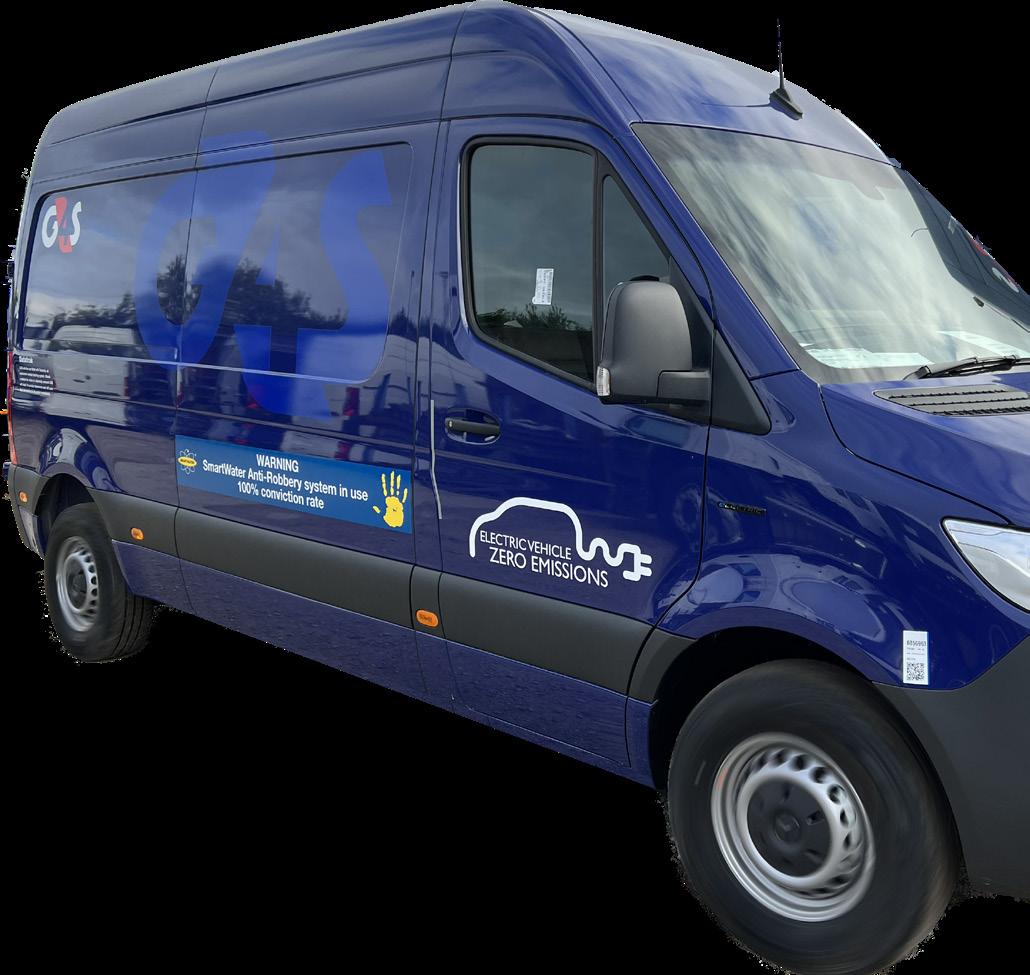
40 April 2023
“The expectation is that, over the next five-to-ten years, we'll see continuing advancements around battery range, which will allow us to invest more in the electrification of our heavier vehicles. But we’re absolutely fixed on achieving these targets.”

On that note, he adds that G4S UK&I has a number of trials ongoing with some of its smaller cash vehicles – mostly Transit vans that have been fully electrified. “We're kind of testing and learning as we go on that,” he says.

As with any change, taking people along with you is vitally important, and Willescroft says LeasePlan has helped here, too, ensuring that G4S people transitioning to EV and hybrid cars have all the support they need.
“That’s been really important, both in terms of the speed of migrating to low-emission vehicles, but also people getting excited by it and being able to create a narrative around successes. We want to create passion around the change, because passion is what makes for change ambassadors, who can help with making the transition process as quick and painless as possible.”
In terms of collaborating with an ecosystem of businesses to meet its sustainability targets, Willescroft says: “You need partners who are flexible and understand your business, trying to problemsolve and help you achieve your outcomes, as opposed to a one-size-fixes-all offering.”
G4S is making greater headway on fleet decarbonisation in the UK&I than it is in any other territory, although similar programmes are underway in the Netherlands, Denmark, and Belgium. But he also says that, in the UK&I, there is “greater customer expectation around sustainability than in many other markets”.
“We’ve made great progress this year with our fleet decarbonisation. More than threequarters of our new vehicle orders have been low-emission
supplychaindigital.com 41 G4S
CHIEF PROCUREMENT OFFICER,
Other factors that are currently limiting progress on EVs in some territories are a lack of charging infrastructure alongside the many governments not yet incentivising businesses to embrace sustainability in the same way as in the UK&I, where there are tax breaks around EV initiatives. Plus, according to Willescroft, in some countries such as South Africa, coal is still being burned to create the electricity needed for EVs.
“In which case, you're not really achieving much by electrifying your fleet,” he points out. “There's an awful lot of factors that make fleet decarbonisation complicated, and there’s no doubt the easier markets right now are the UK&I and Europe.”
“We've got a really clear fleet strategy in UK&I,” he says. “It's been approved across the region and it's also something our customers really care about. It's the right thing to do as a business; it's the responsible thing, and customers want us to do it.”
He adds that legislation around sustainability is also getting stronger all the time. “You won't be able to buy a new diesel or petrol vehicle after 2030 in the UK, so it's a perfect storm of reasons to do it anyway.”
Yet, despite this, Willescroft admits that rampant fuel inflation across all markets and a year-on-year increase in the cost of vehicles “have produced a tension between cost and the speed at which we can roll out our net-zero strategy in the UK”.

As well as government tax incentives, the company is striving to get as close to cost-neutral as possible. “We buy a lot of vehicles, so we leverage this with OEMs and manufacturers,” says Willescroft. “We also make sure we’re looking at the total cost of ownership of vehicles, rather than just the lease price.
“This helps us be more creative in terms of what we can provide but, ultimately, however you cut it, there'll be a net increase in fleet costs. You can't really escape that.”
Driving towards a sustainable UK fleet
42 April 2023
WATCH NOW
Although squarely focused right now on the UK&I, Willescroft and his team are acutely mindful of G4S’s global net-zero targets, which is why it has relationships with companies similar to LeasePlan across its territories.
“We've got partners in each market that we'll look to lean on in the same way when the time comes,” he explains. “We'll look to leverage our experience in the UK, so we're not recreating it each time we're using the playbook.”
On the broader question of sustainability Willescroft says he has “strong, top-down sponsorship from the board, whether it be net-zero, diversity, or human-rights risks - sustainabilityustainability is about far more than net-zero.”
With sustainability and ESG initiatives, Willescroft says embedding is key. “How do we do that? By making sure that, at a functional level, ESG and sustainability

are a core part of how we are measured and how our objectives are measured. This way, everything flows all the way down to individual objectives.”
“Over the coming year, everyone has targeted individual measures that are not only around commercial delivery, but are also really clear on ESG and sustainability objectives. This means sustainability topics are standing-agenda items every time we engage with the business. Every time we sit down and review performance with the business units or talk about sourcing, deals, or supply management performance, then sustainability is a core part of that.”
Only by constantly talking about sustainability and ESG does Willescroft believe you can fully embed them into a business.
supplychaindigital.com 43 G4S

44 April 2023
BACK-DOOR CYBER THREAT
LEAVING SUPPLY CHAINS
EXPOSED
War in Ukraine has heightened the cybersecurity threats posed by supply chains with 1000s of vendors, and it is time for businesses to act, says
BlueVoyant
WRITTEN BY: SEAN ASHCROFT
Supply chains often comprise thousands of vendors, many of which might be vulnerable to cyber attacks. Hackers often target such vendors as a means of gaining access into a larger company – the so-called backdoor attack.
Supply vendors are too often the entry point for malware, ransomware or denial of service attacks, which then work their way upstream or downstream to the larger organisation itself.
In the event that a supplier or third party is subject to a cyberattack that means they are unable to deliver key products or services, this can become a big problem very quickly and may impact business continuity. Internally, the biggest cyber threats come from suppliers or other third parties who
James McDowell MD of cybersecurity firm,
supplychaindigital.com 45 SUPPLY CHAIN
Unlock hidden value in your Supply chain


An award-winning collaborative supplier relationship platform Suppeco leverages the potential in relationships to solve key challenges within the value chain
Built to capture, measure, Improve. A practical solution built for the real world

BOOK A DEMO
have access to an organisation's IT networks. Externally, the biggest threat is from thirdparty organisations who perform a critical business process or deliver a key product to the first party.

Yet despite the high-tech world we live in, a deal of cybersecurity is not complicated; much of it is down to sound housekeeping and well-managed communications, both in-house and external.
James McDowell is MD of BlueVoyant UK, whose cloud-based cybersecurity platform, BlueVoyant Elements, detects and respond to cybersecurity incidents.
“When it comes to supply chain cybersecurity many organisations are stumped by the scale of the issue”
supplychaindigital.com 47 SUPPLY CHAIN
JAMES MCDOWELL, MD, BLUEVOYANT UK
Common supply chain cybersecurity threats
Supply chains can comprise thousands of vendors, many of which might be vulnerable. Hackers often target such vendors as a way to hack into larger companies – the so-called backdoor attack.
The consequences of such an attack can be severe, operationally, financially and reputationally.
Below are some of the top cybersecurity threats facing supply chain.
HUMAN ERROR
This is something all hackers rely on, and for good reason: we’re all fallible. Accidental sharing includes personal or business data, via email, unsecured forms or via social media messaging. It is a particular threat to companies where large numbers of employees have access to primary databases.
POOR HOUSEKEEPING
For all the sophistication of cybersecurity solutions, one of the biggest problems remains people's complacency and laziness around basic cybersecurity housekeeping. We all know someone who uses the same passwords for everything, or who doesn't bother changing default passwords from 0000 or 1111 to something secure.
PDFS
Scammers know people are more likely to open a PDF than an email, especially if they think it is a bank statement. Security company Palo Alto Networks says last year there was a 1,160% increase in malicious PDFs.
DATABASES
Database security is a big security challenge for businesses. According to American IT provider, Straight Edge Technology, some hackers use social engineering attacks to steal login credentials, while others use malware to gain access.
SMS
So-called ‘smishing’ sees the attacker send an SMS text message with a link that, once clicked, begins the attack. Cyber criminals are turning to such attacks because many email programmes – Google Mail and Microsoft Outlook for example – are smart enough to detect phishing emails.
IOT DEVICES
IoT devices open up serious cybersecurity threats, especially in supply chain, where IoT tech is commonplace. According to Symantec, IoT devices experience an average 5,200 attacks a month, and with IoT tech expanding almost exponentially, the attack surface for cybercriminals to target is huge.
48 April 2023
43% 14% of such companies are adequately protected SUPPLY CHAIN
Needle has not moved on supply chain security

But the stark truth is too many businesses have a supply chain security problem. McDowell says that industry research suggests that on monitoring and mitigating cybersecurity risk in the supply chain “the needle has barely moved in the past three years”.
He says that with economic uncertainty “putting pressure on budgets and cybercriminal activity escalating” organisations “must urgently consider how they are going to address this”.
He adds: “Companies must urgently consider how they’re going to address this issue because maintaining the status quo is simply not sufficient.
“It’s a status quo whereby 97% of companies have experienced negative consequences due to a cybersecurity breach among the external vendors and suppliers that form their supply chain.”
More concerning still says McDowell is that BlueYovant research shows that even among organisations that take steps to mitigate third-party cybersecurity risk, more than one-third of them reassess that risk
An Accenture study showed that in the US
of cyberattacks are aimed at small to medium-sized enterprises but that just supplychaindigital.com 49
only every six months. “And just 3% of them are able to monitor risk daily or in real time,” he says.
“A lot can happen in a week to take a supplier from compliant to high-risk,” McDowell points out. “So if you multiply that by the six months or more at which organisations are typically reassessing their vendors it is clear that the level of unmanaged risk is considerable.”
BlueVoyant’s research – conducted among 300 senior UK cybersecurity professionals – also found the average organisation had suffered more than four breaches in 2022 12 months, up from just over 3.5 breaches on average in 2021.
“This points to a huge visibility problem,” says McDowell.”The majority of cyber risk in the digital supply chain is going undetected for long periods. This allows potential attackers ample time to infiltrate systems, island hop from one to another and launch destructive attack campaigns with little risk of being discovered.”
He adds: “This means that most businesses are easy targets for attacks, and are exposed to the threat of operational disruption, financial losses and reputational damage during a time when economic uncertainties severely impact the chances of recovery.”
Cybersecurity vendor ecosystems can overwhelm firms

McDowell says that, when it comes to supply chain cybersecurity many organisations “are understandably stumped by the scale of the issue”.
He adds that today’s vendor ecosystems are massive and complex, sometimes comprising thousands of suppliers with varying levels of access to a business’s systems and infrastructure. “Monitoring all these using conventional methods, such as
surveys, generates a huge administrative burden and only provides limited assurance of a supplier’s cyber security posture at a single point in time,” he says
McDowell says that although this “ticks a compliance box it doesn’t offer a picture of evolving risk that helps the business adapt strategically to the threat environment”. Typically, he says, businesses look more closely at top-tier suppliers, “which are mainly those with whom it has strategic relationships. But they have less bandwidth to monitor the long tail of other suppliers,”
50 April 2023 SUPPLY CHAIN
he adds. “Nevertheless, it only takes one of these lower-profile partners to become victim to an attack to set off a domino effect of network compromises.
Resolving this, he says, requires “a step change”, in how organisations gain visibility over third parties and that “deploying automation is the logical step to take”.
McDowell reveals that BlueVoyant’s research found that UK companies are less likely than those in other countries to use a vendor risk-management programme, with just 36% saying they have one in place,
 James McDowell
James McDowell
TITLE: MANAGING DIRECTOR

COMPANY: BLUEVOYANT UK
INDUSTRY: CYBERSECURITY
McDowell is an established cybersecurity director who says he has “a natural entrepreneurial mindset and in-depth and wide-ranging expertise”. This expertise extends to information assurance, breach management and cybersecurity services.
“Economic uncertainty is putting pressure on budgets and cybercriminal activity is escalating”
JAMES MCDOWELL, MD, BLUEVOYANT UK
The British government reports that almost
A THIRD OF UK FIRMS
with digital supply chains are vulnerable to cyberattacks, with many lacking even basic protective measures
compared with 41% of respondents from elsewhere. He says this pattern might be linked to budgets. “UK organisations are less likely than those in other regions to be getting cybersecurity budget increases”.

But he warns that the “intensive threat landscape” should be enough to prompt businesses to reconsider budgets.
“They need to consider whether the price is worth paying, to avoid the currently almost certain risk of suffering a breach via the supply chain.”
McDonnell says when it comes to managing alerts arising from vendor monitoring, companies “should look towards advanced AI-powered options” because “these can lift the burden of analysis and prioritisation”. He adds that “it’s important there is the facility for human review of key decisions and processes. The investment needed to
establish effective third-party cyber risk management is not as high as you might think,” he says, adding that “implementing a robust solution delivers a host of strategic data that can be incorporated into corporate risk management and decision-making processes”.
He continues: “Businesses should look for solutions capable of scaling, to cover all suppliers. They should also aim for continuous monitoring so that attackers’ window of opportunity is limited as far as possible, and risk is reduced accordingly.”
This, he says, allows businesses to proactively manage their supply chains and to deliver greater resilience at a time when it is badly needed.
“And of course, compared to the cost of a breach, the investment is a price well worth paying,” he stresses.
52 April 2023
Ways to bolster supply chain cybersecurity
Here is some advice around protecting supply chains from Andrew Wood, Engagement Director at Elixirr, the global consulting firm. Wood has a long background in IT procurement.
PREVENTION
Prevention is always better than cure. Enlisting a focused cybersecurity service provider that can undertake a robust cyber maturity assessment helps.
BUDGET ASSESSMENT
More companies are upping the ante on cybersecurity spending in technology supply contracts, due to the costs that can result from a breach. There must be healthy conversations between CISOs and CFOs about budgets if preventative measures are to be properly supported.
COMPLIANCE
Companies must ensure their technology supply agreements include appropriate security compliance provisions that delineate the cybersecurity requirements in which their technology partners need to comply.
COLLABORATION
One of the best things is a robust sourcing strategy that embeds diligence around supplier screening as part of the onboarding process. Contractual provisions must also be part of agreements, so that ongoing monitoring of supply chain risk takes place.
PARTNERSHIPS
The cybersecurity supplier and solution landscape is crowded, and companies must select partners who reduce the risk of cyberattack on their unique technology footprint.
MANAGING RISK
Businesses need to know where they are on the risk spectrum. It’s important to understand the varying requirements around robust cybersecurity risk management and governance.
STAY CURRENT
The pace of change in technology is unrelenting. Technology-sourcing professionals need to stay up-to-date on their tech knowledge if they are to properly advise CIOs and CFOs on the best cybersecurity investments.
supplychaindigital.com 53 SUPPLY CHAIN
OPTIMISE MANUFACTURING WITH DIGITAL AND INDUSTRY 4.0

 AD FEATURE
WRITTEN BY: TOM SWALLOW
AD FEATURE
WRITTEN BY: TOM SWALLOW
54 April 2023
PRODUCED BY: JAMES WHITE
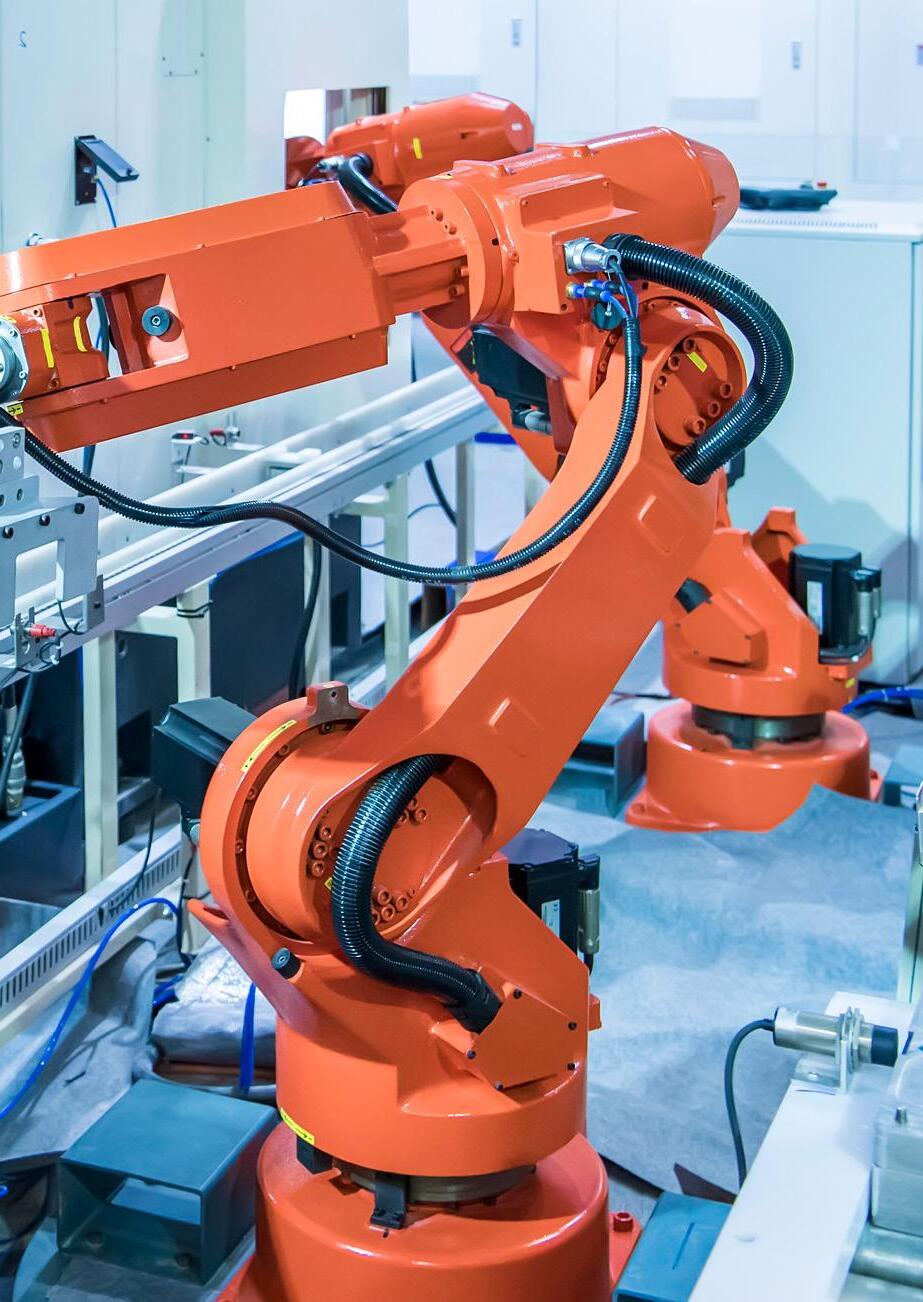

supplychaindigital.com 55 HCLTECH

56 April 2023
Venkata ‘Raj’ Parchuri, AVP of manufacturing, explains HCLTech’s digital readiness frameworks and leveraging partnerships for industry 4.0 technology insights

Organisations want productivity, particularly in the manufacturing industry where quality, efficiencies, and increased capacity utilisation are high on the business agenda. But there is more to this than mere standardisation: manufacturers require agility in the wake of industry 4.0. Digital technology goes hand-in-hand with industry 4.0, and HCLTech is committed to showing firms exactly how combining the two can provide benefits that exceed the confines of their production equipment. Digital solutions offer businesses better ways to optimise their manufacturing processes through the use of data and artificial intelligence (AI), along with other products that can be implemented to minimise downtime and increase their potential.
One of the major challenges of digitalization is implementation. And HCLTech prides itself on being one of the leading providers of digitalization solutions and consultation. But what makes the IT firm stand out from the rest are its vast applications of digital technology in the manufacturing landscape as well as other industry verticals. Focusing particularly on the implementation of digital services and cloud, Venkata ‘Raj’ Parchuri, AVP of Manufacturing at HCLTech, explained to me how the organisation’s strategy is aligned with client needs, changing the way they look at digital transformation.
A critical offering of HCLTech is its MVision—a framework that aids the client’s digital journey and showcases the financial benefits, starting with their bottom-line income.
supplychaindigital.com 57 HCLTECH
STRATEGY TO SUCCESSFULLY INTEGRATE DIGITAL TECHNOLOGY WITH INDUSTRY 4.0
“What is HCLTech’s manufacturing industry strategy?”
RP: “HCLTech’s manufacturing industry strategy encompasses everything from infrastructure modernization to building hyper connected enterprise of the future. Our strategy helps manufacturing companies navigate the current dynamic landscape to deploy cutting-edge solutions that help them innovate and ensure profitability by improving the bottom line and creating an avenue to increase the topline.
“Supporting our manufacturing strategy is HCLTech's MVision framework, which is built for organisations preparing for the future. We are building hyper-connected enterprises by helping them re-imagine, remain resilient, and continuously reinvent, while being resistant to embrace any future uncertainties.”

“What does industry 4.0 look like from HCLTech’s perspective?”

RP: “From HCLTech’s perspective, industry 4.0 is the foundation built to empower the manufacturing clients so they can benefit from unprecedented levels of digital adoption for scaling effectively and becoming data-driven and insightful organisations.
“Manufacturing clients have set forward actions to rapidly adopt industry 4.0 technologies such as the Internet of Things (IoT), immersive technologies like Augmented Reality (AR) or Virtual Reality (VR), AI and machine learning (ML), cloud, and 3D printing. The goal is to not only effectively collect, but to analyse and act on vast troves of data coming in from both physical and business systems. Manufacturers are also looking to use these technologies to improve on current
“ESG HAS BECOME A CRUCIAL MEASURING FACTOR FOR ANY ORGANISATION'S SUCCESS AND, MORE IMPORTANTLY, IN THE MANUFACTURING SEGMENT”
58 April 2023 HCLTECH
VENKATA PARCHURI AVP OF MANUFACTURING, HCLTECH
EXECUTIVE BIO
VENKATA PARCHURI
AVP OF MANUFACTURING
IT SERVICES AND CONSULTING

UNITED STATES
Joining HCLTech as its AVP in 2019, Venkata ‘Raj’ Parchuri previously worked with NTT Data as well as many big names in the retail sector, including Costco, Levis Strauss & Co., and motoring brands Harley davidson and Toyota. Bringing his experience to the role at HCLTech, Parchuri is responsible for a variety of workloads, spanning IoT, Digital , Digital IT roadmap, Business Process, Business Process Design, Customer Relationship Management (CRM), IT Strategy, and Data Warehousing.
Leading up to his career, Parchuri studied in India in 1997 at the Jawaharlal Nehru Technological University where he obtained a Bachelor’s Degree in Technology, Electrical, Electronics, and Communication Engineering.
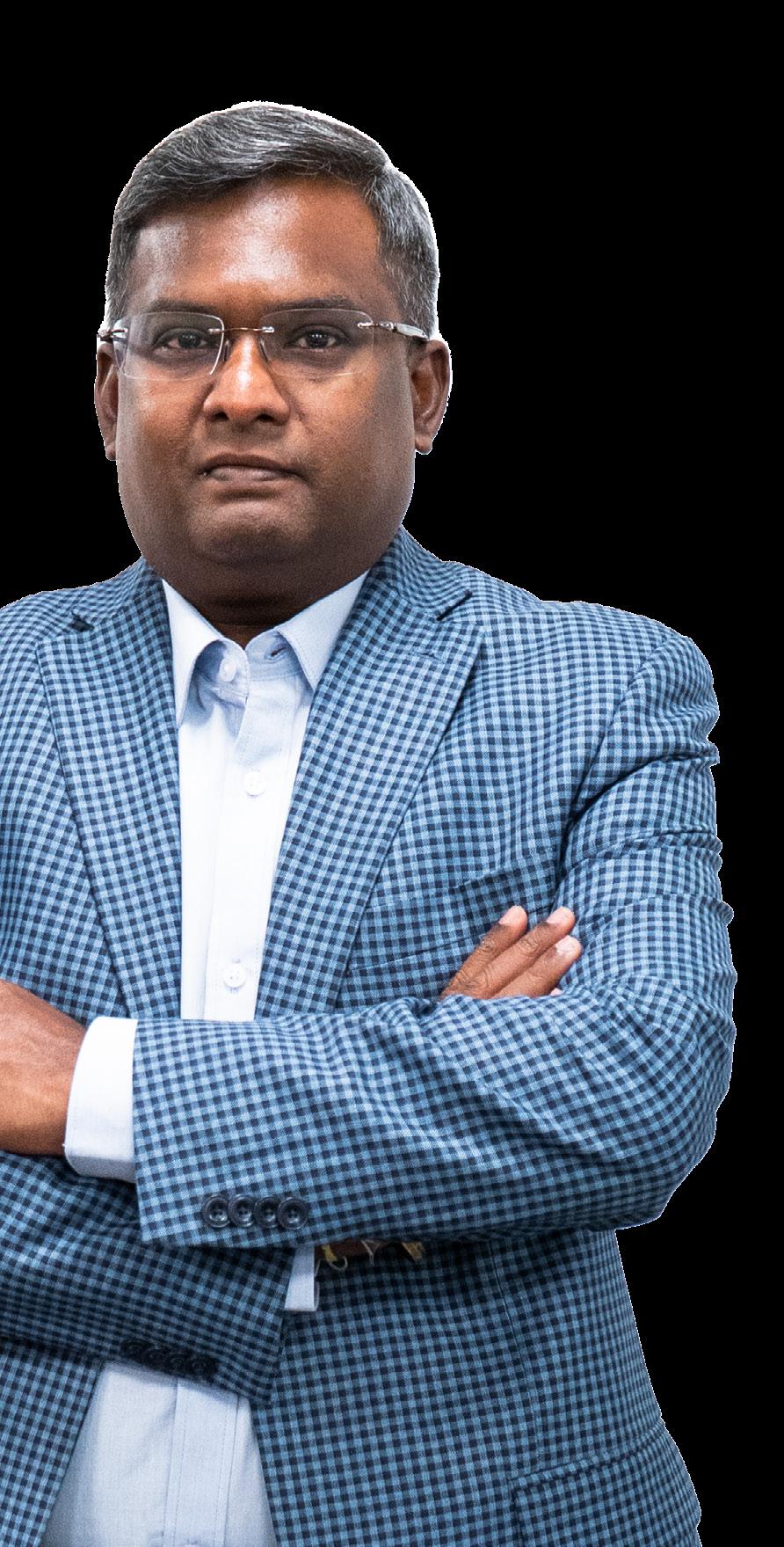
supplychaindigital.com 59
processes and optimise further to become more competitive, productive, and profitable while ensuring business continuity.”
“What does the future look like for digital and industry 4.0?”
RP: “Digitisation of the end-to-end value chain leads to greater productivity, growth, and sustainability. Digital and the industry 4.0 technologies are helping our manufacturing clients redefine their products and the process of making them. The way manufacturing clients design & engineer products, how products are sourced and supplied, how products are manufactured, and how products are serviced and renewed are changing with digital and industry 4.0.”
“Overall, industry 4.0 and digital are paving the way for increased revenue through higher productivity while ensuring the quality of the products—and all this is achieved by improved resource utilisation, higher employee throughput and reduced
overall costs. This helps manufacturers take advantage and stay ahead of the curve.”
From this discussion, it seems organisations are yet to discover the benefits of digital transformation in relation to their productivity, as well as the overburdening sustainability agenda that businesses care to address.
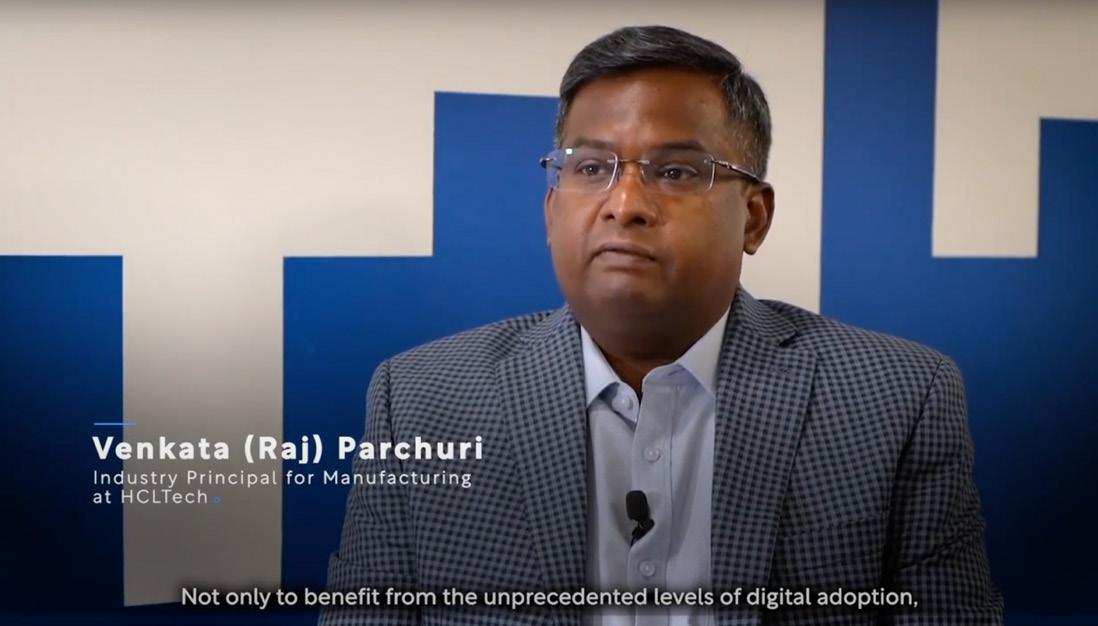
The MVision framework, which is powered by MVision Nucleus, allows manufacturers to be ahead of the curve by leveraging services like Digital Foundation, Digital and Analytics, Digital Process Operations, Products and Platforms, and Cybersecurity, to name just a few and becoming data-driven organisations.
These solutions can be tailored towards a diverse range of different manufacturing processes. Enabling cloud services allows companies to utilise data and perform functions that keep them one step ahead of their operations. Meanwhile, the same services facilitate real-time adjustments
WATCH NOW 60 April 2023 HCLTECH
optimise
manufacturing with digital and industry 4.0
to companies’ processes to maintain quality and productivity in the wake of new operational circumstances.
An example of this is predictive monitoring and analytics. Digital and cloud services create a real-time data stream— often in the form of digital twins—sharing insights such as machinery output, condition, and data to optimise performance. The ability to access these insights will not only alleviate immediate production issues, but also ensure that companies remain resilient in the face of any unforeseen and uncontrollable changes.
TAKING INDUSTRY 4.0 TO THE CLOUD

“How is HCLTech helping enterprises realise their digital potential?”
RP: “We help design and build key platform components of clients’ digital technology footprints to power their digital transformation journeys.
“Our team of design-thinkers and industry-process experts help our clients break down barriers by combining deep knowledge of business processes with user centric design principles—to truly visualise the potential of digital technology. HCLTech brings its entire gamut of expertise—from consulting to implementation—to ensure clients become digital-ready from shop floor to the top floor.”
“What are the digital trends you are seeing among your clients?”
RP: “HCLTech’s clients are adopting digital and are building on a nucleus of industry 4.0 technologies to deploy profitable and innovative cutting-edge solutions. Examples include smart manufacturing, where asset management is a core aspect of smart manufacturing, transforming this process through remote monitoring control, and predictive analytics serving as the foundation for operational resilience.
“HCLTECH'S MVISION FRAMEWORK IS BUILT FOR ORGANISATIONS PREPARING FOR THE FUTURE OF HYPERCONNECTED ENTERPRISES”
supplychaindigital.com 61
VENKATA PARCHURI AVP OF MANUFACTURING, HCLTECH
“HCLTECHWAS RECOGNIZED BY THE EVEREST GROUP AS A LEADER IN TALENT READINESS AND DIGITAL TALENT CAPABILITY”
VENKATA PARCHURI AVP OF MANUFACTURING, HCLTECH
“Supply chain resilience allows our clients to react more quickly to both internal and external events, speeding up ‘time to recovery’ for larger disruptions as well as product and service innovation. With this, the offerings that our clients can bring to market are transforming as well. A top focus for many clients is the incorporation of digital technology into products and the development of new value-added services.”
“How is HCLTech strategically placed to prepare clients for digital?”
RP: “In 2021, HCLTech was recognized by the Everest Group as a leader in talent readiness and digital talent capability. HCLTech was recommended for its robust strategy and ecosystem of digital talent development, structured go-to market and branded offerings for talent related themes, investments in building agile workspaces, full employee lifecycle, and identifying next generation IT skills.
“We have 20,000 employees trained on the latest SAP S/4 HANA intelligent ERP. We also provide experts that are trained and certified with our hyperscale partners

AWS, Microsoft, Google, and other partner technology OEMs.”
As mentioned by Parchuri, the ability of HCLTech to understand the ‘ins’ and ‘outs’ of its partners’ solutions gives the organisation a competitive advantage and it also provides a large, skilled workforce for managing client demands in these areas. Credit must be given to HCLTech’s extensive work maintaining strong partnerships with providers like SAP, AWS, Microsoft, Google, and many others. These long-term collaborations help leverage HCLTech’s products and deepen the understanding to optimise them for manufacturing purposes.
62 April 2023 HCLTECH
PARTNERSHIPS TO MAXIMISE DIGITAL PRODUCTS
“What benefits do you gain working with partners?”
RP: “Our partners are really critical in our journey to help our clients achieve their digital goals and become cutting edge manufacturers that take advantage of industry 4.0 solutions.

“Partners give us a leg-up and allow us to be ahead of the curve on the latest technologies and trends, which ultimately helps us maximise our industry depth and deliver value to our clients through innovative solutions and frameworks.”
“How important is ESG when choosing business partners?”
RP: “ESG has become a crucial measuring factor for any organisation’s success, especially, in the manufacturing segment. First of all, we publish our ESG scores. We've been rated the highest among all service providers based in India and, for some time, HCLTech has been engaging with its clients across manufacturing, automotive, mining, healthcare, and life sciences as a digital sustainable partner.
“To achieve our ESG goals, it’s important that our partners are also aligned to them so we can gain a powerful insight into making more sustainable sourcing decisions and enable proactive supplier engagement. We continuously monitor, engage and incorporate suppliers’ own sustainability goals.”
As HCLTech continues to highlight the great achievements to be made with digital solutions and the opportunities available to its clients, the main opportunity that Parchuri envisions lies in the use of data. Data can be used for ESG transparency, revitalising manufacturing processes to make them more adjustable to changes and supply chain disruptions, and to share the latest products and services with industrial clients to optimise their performance.
Sustainability is not only a driver of change but can also facilitate the necessary changes in organisations to achieve higher production outputs and reach unforeseen revenues. HCLTech is well-versed in digital trends, formalising business-ready frameworks to make adoption a seamless process.
supplychaindigital.com 63 HCLTECH
64 April 2023 LOGISTICS
WHAT DOES MOVE TO CLEAN FUEL MEAN FOR
THE SEA FREIGHT SECTOR?
The International Maritime Organisation demands the sea freight industry is running on clean energy by 2050 but how will it achieve this, and what will be the cost?
WRITTEN BY: SEAN ASHCROFT
supplychaindigital.com 65
66 April 2023
ea shipping’s bid to implement its programme of carbon-cutting measures will be pivotal to the global bid to be net zero by 2050.
The shipping sector powers the global economy, being involved in an estimated 90% of all trade. Estimates from the International Chamber of Shipping indicate that around 11bn tons of goods are transported by ships each year –from raw materials to finished products.
Global sea shipping also accounts for roughly 3% of total global carbon emissions. These emissions, if unchecked, could rise by as much as half again by 2050.
Sea freight companies realise that, if the sector is to hit its carbon targets, then zero-emission fuels and vessels will need to start being deployed at scale over the coming decade.
But as all sectors are finding, the move to zero-emission fuels is expensive. Clean fuels could increase the total cost of vessel ownership by between 40-60%, depending on the route.
Sea freight emissions must be halved by 2050
Yet cost must not be allowed to stand in the way of progress, which is why the International Maritime Organization (IMO) –a specialised agency of the United Nations responsible for regulating shipping – has mandated emission reductions of 50% for all vessels by 2050. A number of countries, including Japan, the UK and the US, have also set similar net-zero shipping targets.
Because ships have a 20- to 25-year operating life, it means that zero-emission programs must be implemented at pace over the next decade. With the clock ticking, there are many challenges ahead.
Alex Hersham is CEO of Zencargo, a digital freight forwarder and logistics provider.
Asked what the IMO regulations mean for carriers and supply chain executives in the immediate future, Hersham says carriers “will keep a close eye on what ships are compliant”, and that they will also “analyse which older ships can be scrapped if there is no ROI in making them compliant”.
S
“OLDER VESSELS WILL EITHER HAVE TO SWITCH TO MORE EXPENSIVE BIOFUELS OR SIMPLY SLOW DOWN”
supplychaindigital.com 67 LOGISTICS
ALEX HERSHAM, CEO ZENCARGO
Sustainable procurement: more than box-ticking

Businesses with strong sustainability performance benefit from lower capital costs, higher valuations, higher profitability, and lower exposure to risk.
 Because Insight Beats Hindsight
Because Insight Beats Hindsight
Download our eBook to learn more
For older vessels, he says, the choice will be to switch to cleaner and more expensive biofuels “or to simply slow down”, to cut down on fuel consumption.
“With new capacity entering the market, many carriers might choose to retire older vessels rather than maintain inefficient operations,” says Hersham.
He also points out that the IMO is not forcing vessels to comply until 2024, and that it will not prevent non-compliant vessels from sailing until 2025.
“This means any scrapping or idling of ships for the next two years is at the carriers’ discretion,” he says.
Sustainable sea shipping ‘will cost more’

In terms of what the new regulations will mean for sea freight prices, Hersham feels that shipping companies “might eventually increase the cost of sea freight to help pay for new energy efficient technologies and fuels that comply with new IMO requirements”.
Having endured some of the highest ever sea shipping rates over the past three years, it remains to be seen how customers will react to such a price hike, especially as they have only recently begun benefitting from a return to pre-pandemic shipping rates.
IMO -
International Maritime Organisation introduction WATCH
NOW
“WITH NEW CAPACITY ENTERING THE MARKET MANY CARRIERS MIGHT CHOOSE TO RETIRE OLDER VESSELS RATHER THAN MAINTAIN INEFFICIENT OPERATIONS”
supplychaindigital.com 69 LOGISTICS
ALEX HERSHAM, CEO ZENCARGO
SARAH BARRETT, HEAD OF PRODUCT INSIGHTS, WÄRTSILÄ VOYAGE
The pace of change in sustainable sea freight is encouraging, says Hersham.
“We’re already seeing a shift to more-sustainable shipping,” he says. “This is reflected in the carriers’ order books for more dual-fuel ships, which are beginning to make up a greater proportion of new vessels.”
He also points out the Chinese State Shipbuilding Corporation reported recently that 31.6% of vessels completed in 2022 were dual-fuel ships. Although sea cargo businesses have a couple of years’ grace, Hersham says the regulations determining acceptable levels of emissions will grow tougher year-onyear, “meaning that the pressure on less efficient vessels will continue to grow”.
Biofuels require no ship engine modifications
Hersham feels that there is great potential for investment in biofuels.
“Some biofuels, such as dimethyl ether, require no extensive modifications to engines, and are the most ready lowemissions fuel option,” he says. But, he adds, these are also “substantially more expensive than traditional fuels”, and that there are doubts such fuel “can be consistently produced in the required quantities”.
However sustainable shipping plays out over the coming years, Hersham says that supply chain executives must prepare for change by “speaking to their partners in order to understand how the new regulations will affect capacity, lead times and schedule reliability”.
Yet net zero sea freight is not just a question of fuel choice; it will also be driven
“DATA-BASED DECISION MAKING WILL FUTURE-PROOF MARITIME ORGANISATIONS AND ENSURE THEY RUN SUSTAINABLE AND PROFITABLE BUSINESSES”
LOGISTICS 70 April 2023
A McKinsey report urges the global sea shipping industry to introduce green shipping lanes.
The report – called The Next Wave: Green Corridors – is a joint effort by The Getting to Zero Coalition – a partnership between the Global Maritime Forum, the Friends of Ocean action, and the World Economic Forum. The report says that the technology to help shipping reach net zero by 2050 already exists, but that it needs to be deployed not only at far greater scale and speed, but also at lower cost.
It adds that one way to accelerate decarbonisation is to introduce ‘green corridors’ – specific trade routes between major port hubs where zero-emission solutions are supported.
Green corridors, says the report, would allow policy makers to create an “enabling ecosystem with targeted regulatory measures, financial incentives, and safety regulations”.
It adds that policy makers should also encourage the production of lower cost green-fuel, to help mobilise demand for green shipping.
It continues: “Green corridors could create secondary effects that reduce shipping emissions on other routes.
“These corridors would ideally be large enough to include all relevant value-chain actors, such as fuel producers, cargo owners, and regulatory authorities. They would send strong signals to vessel operators, shipyards, and engine manufacturers to ramp up investment in zero-emission shipping, making the risks more acceptable for all involved.”
supplychaindigital.com 71
Global shipping bodies urge adoption of ‘green lanes’
Alex Hersham
TITLE: CEO
COMPANY: ZENCARGO
INDUSTRY: FREIGHT FORWARDING
LOCATION: LONDON
Zencargo helps businesses in Europe and the Americas to make supply chain a competitive advantage, says CEO Alex Hersham. The company is headquartered in London and has a global team that provide digital freight forwarding services, “helping clients reduce costs, ship smarter and stay on top of inventory”, he says.

Sarah Barrett
TITLE: HEAD OF PRODUCT INSIGHTS
COMPANY: WÄRTSILÄ VOYAGE
INDUSTRY: MARITIME DIGITALISATION
LOCATION: HAMBURG, GERMANY
Hamburg-based marketing expert Sarah Barrett says she is "passionate about the digital transformation taking place in the maritime industry". She previous worked for SKF Marine.

by businesses leveraging, and sharing, maritime data across the vessel ecosystem.
Sarah Barrett is Head of Product Insights at maritime digitalisation company, Wärtsilä Voyage. Barrett says digital solutions “need to span from the engine room to the bridge, to the board room, and from ship to shore”.
The past few years have seen the maritime sector’s digital transformation accelerate, she says, “as ship managers, owners and operators face an evolving regulatory landscape and rising fuel costs”. Data, she says, allows organisations “to make betterinformed decisions that are aligned with business and commercial objectives”.
Such as decisions around fuel efficiency. Part of the IMO’s remit is that it regulates fuel efficiency levels. From January 2023 it introduced a new measure called Energy Efficiency Existing Ship Index (EEXI). The EEXI is a measure related to the technical design of a ship. Ships have to attain EEXI approval once in a lifetime, but by the end of 2023 at the latest.
Barratt says: “Given the new CII and EEXI regulations, monitoring and altering environmental performance within the global fleet will become more urgent.
“Data-based decision making will play a crucial role in future-proofing maritime organisations and ensuring they continue to run safe, sustainable, efficient, compliant and profitable businesses.
“Making decisions based on gut or instinct is no longer viable. Without datadriven insights, companies will stay stuck in reactive mode, at the mercy of market change rather than adapting to it.”
72 April 2023
LOGISTICS
AROUND
11BN TONS
OF GOODS ARE TRANSPORTED BY SHIPS EACH YEAR – FROM RAW MATERIALS TO FINISHED PRODUCTS
31.6%
CHINESE STATE SHIPBUILDING CORPORATION REPORTS THAT 31.6% OF VESSELS COMPLETED IN 2022 WERE DUAL-FUEL SHIPS
GLOBAL SEA SHIPPING ACCOUNTS FOR ROUGHLY
3% OF TOTAL GLOBAL CARBON EMISSIONS
CLEAN FUELS COULD INCREASE THE TOTAL COST OF VESSEL OWNERSHIP BY BETWEEN
DEPENDING ON ROUTE 40-60%
supplychaindigital.com 73
Coal power plant in the morning mist, Mae Moh, Lampang, Thailand. Such emissions are common in many supply chains, and can account for as much as 80% of a company’s carbon footprint

SCOPE
SCOPE
74 April 2023 SUSTAINABILITY
SCOPE 3
SCOPE 3
IS
KEY BATTLEGROUND IN THE WAR ON CARBON EMISSIONS

Nedra Dickson of Accenture and Dr Michael Moore of graph-based, digital-twin tech provider Neo4j on why firms must act fast on Scope 3 and how to achieve this
WRITTEN BY: SEAN ASHCROFT
supplychaindigital.com 75
SUSTAINABILITY
Just a few years back, talk of scope emissions would likely have elicited a quizzical glance; not many people knew what they were, let alone why they were so important. But that could not be more different in today’s world, where investors, stakeholders, suppliers, and customers are beginning to demand that the organisations to whom they are connected are fulfilling their obligations on scope emissions.
Before we go any further, perhaps a quick recap of what Scope emissions are might be helpful.
Greenhouse gas emissions are categorised into three groups, or 'Scopes'. Scopes 1 and 2 are emissions that are owned or controlled by a company.
As such, Scope 1 covers emissions from burning fuel in a fleet of vehicles, whereas Scope 2 are emissions a company causes indirectly, when the energy it purchases and uses is produced. Energy for an electric fleet of vehicles, for example.
But it is Scope 3 emissions that hold the key to making serious headway on reaching global net-zero targets by 2050. Scope 3 are emissions that are not produced by the company itself or a result of activities controlled by them, but emissions they are indirectly responsible for up and down its value chain. This includes the emissions of partner companies involved at any stage of production or processes.
For many organisations, Scope 3 comprises up to 80% of their Scope emissions; for large multinationals, in particular, where supply contains tens of thousands of vendors spread across the globe – many of which might be in developing countries and lack the technology or wherewithal to cut emissions without help.

76 April 2023
A deforestation fire in the Amazon Basin. Forests are essential to life. They are the lungs of our planet and help to regulate the climate. They are second only to oceans as the largest global store of carbon. Companies such as Unilever are committed to achieving a deforestation-free supply chain.

“The pace at which we need to move on Scope 3 is frightening and all of it is mission-critical right now”
supplychaindigital.com 77
NEDRA DICKSON, GLOBAL SUPPLIER INCLUSION & SUSTAINABILITY MD, ACCENTURE

Collaboration is needed if the Scope 3 problem is to be resolved
“This is why tackling Scope 3 is a matter of collaboration,” says Nedra Dickson, MD of Global Supplier Inclusion & Sustainability at Accenture. Dickson, who has been with Accenture for 21 years, works with small businesses, suppliers, and subcontractors across the world.
“Scope 3 goes throughout the entire supply chain, so it's super important we work together with all of them to act on this issue.
“The pandemic and the ongoing disruption that has followed taught us that we need to change the way we work with suppliers on sustainability. We've realised that partnership on many levels is more crucial than ever.”

Scopes 1, 2 & 3: an outline
SCOPE 1 THE GREENHOUSE GAS EMISSIONS FROM SOURCES YOU OWN AND CONTROL, AND ARE THEREFORE DIRECTLY RESPONSIBLE FOR
SCOPE 2 THE EMISSIONS YOU INDIRECTLY PRODUCE THROUGH THE ENERGY OR ELECTRICITY YOU PURCHASE
SCOPE 3 ALL OTHER EMISSIONS YOU ARE INDIRECTLY RESPONSIBLE FOR FROM SOURCES OUTSIDE YOUR DIRECT CONTROL
Phosphate waste in the Atlantic, Morocco.
supplychaindigital.com 79 SUSTAINABILITY
‘Carbon
report shines light on Scope 3
EcoVadis – a provider of business sustainability ratings – issued an estimated 15,000 Carbon Scorecards in 2022.
These provide a five-level Carbon Maturity Rating, ranging from ‘Insufficient’ to ‘Leader’. The ratings also signal certain strengths and areas for improvement within a company’s carbon management practices.
Referencing the company’s Carbon Maturity Report for 2022, Julia Salant, Carbon Solution Director at EcoVadis, said: “Organisations are deepening their commitment to science-based targets, realising that value chain action is essential to drive real impact and change.
“Pioneering procurement leaders recognise that climate action is a journey, and, given the urgency of the climate crisis, they must act now.”
She added: “With the right tools and insights, they can accelerate engagement and set foundations for collaborative climate programmes that meet their suppliers where they are, helping build knowledge and momentum for performance improvement.”
 Logging and land clearing of rainforest for palm oil industry
Logging and land clearing of rainforest for palm oil industry
“Scope 3 goes throughout the entire supply chain, so it’s super important we all act together on this issue”
NEDRA DICKSON, GLOBAL SUPPLIER INCLUSION & SUSTAINABILITY MD, ACCENTURE
maturity’
SUSTAINABILITY
Dickson points out that in joining together to find solutions to the Scope 3 problem, large corporations are finding that small-tomedium-sized businesses are “coming in to fill critical gaps”.
“We’re relying on some of these small businesses not only to partner with, but to be innovative with them,” says Dickson.
Illustrating this point, Dickson points out that the journey to net-zero is “a two-way street”.
“We do development work with a lot of SMEs, but they also come in and help us deliver sustainability. We've had clients and
SMEs that have helped design solar panels that help with some of the calculations around Scope 3, for instance.”
Dickson also notes that “while everybody focuses on Scope 3 because they count for so much in terms of the total”, the reality is that were every company to take responsibility for Scope 1 and 2 emissions, “then Scope 3 would take care of itself”.
“If we are to meet net-zero targets, then most companies will have to double the pace of their emissions reduction; at Accenture, that is what we are looking to help our clients do.”

supplychaindigital.com 81
The Greenhouse Gas Protocol Part 3: Scope 3 Categories Explained

Nedra Dickson
TITLE: MD, GLOBAL SUPPLIER
INCLUSION & SUSTAINABILITY
COMPANY: ACCENTURE
INDUSTRY: BUSINESS SERVICES

LOCATION: USA
Nedra Dickson leads Accenture’s global supplier inclusion and sustainability programmes across 21 countries, and is also responsible for procurement operations across 30 nations in Europe. Her deep expertise in procurement transformation and supplier relationship management has seen her manage an estimated US$2bn in labour spend.

Dr Michael Moore
TITLE: PARTNER SOLUTIONS & TECHNOLOGY PRINCIPAL
COMPANY: NEO4J
INDUSTRY: DIGITAL TRANSFORMATION
LOCATION: US & SWEDEN Moore describes himself as “a high impact leader”. He has 20 years’ experience in implementing enterprise analytics programs and solutions to drive transformative business value. Among his areas of expertise are data governance, data mobilisation and unification, data quality, data visualisation, and predictive modelling.
 WATCH NOW
WATCH NOW
82 April 2023
SUSTAINABILITY
According to Dickson, what will “really move the needle on cutting emissions is technology”.

“It will come down to how we collaborate on deploying technology to reduce greenhouse gas emissions by 2050. This is why we are bringing this to our clients, some of whom might not have really begun that journey.”
Dickson feels it’s imperative that larger businesses are not waiting on supply chain vendors to act. “If you’re able to go in, then go in, collaborate, and bring it to them –even if they're not asking for it. The pace at which we need to move is frightening and all of this is mission critical right now.”
She says that, at Accenture, “sustainability is the next digital”, adding: "Everything we’re doing right now is about digital, and that’s where we want to be with sustainability.”
Graph-based digital twins offer promising sustainability solution
One of the most promising areas in technology for sustainability are graphbased digital twins.
Solution architect Dr Michael Moore is Partner Solutions & Technology Principal Neo4j, one of the world’s biggest graph database companies. Using graph technology, the company helps clients such as Comcast, NASA, UBS, and Volvo transform their industries by optimising global networks.
One of its other customers, OrbitMI – a global maritime shipping company –implemented a graph-based digital twin for real-time intelligent route planning and, as a result, says Dr Moore, “has been able to reduce its carbon emissions by over 60k tonnes, annually”.
Illegal mining causes deforestation and river pollution in the Amazon rainforest near Menkragnoti Indigenous Land, Pará, Brazil
Deforestation and burning wood causes carbon emissions leading to climate change and global warming

84 April 2023
Graph technology is a network-based mathematical theory predicated on the properties and real-world applications of graphs. As such, Neo4j is helping many organisations use graph technology to model complex carbon footprint data to help them meet Scope 3 requirements.
“Scope 3 requirements are hard to monitor as they involve factors outside a company’s direct control or oversight,” says Dr Moore. “But it’s the environmental factor most visible to consumers; it’s therefore important organisations get it right.”
Data mass around Scope 3 can be overwhelming for businesses Dr Moore says unifying the welter of data that exists around Scope 3 is a “huge challenge”.
“There’s data from so many inputs – from workshops in China and India to shipping the parts down the Suez Canal, to couriers biking finished products or components. It’s a huge undertaking.
“Deriving reliable, auditable insights about emissions from billions of connected interactions along the supply chains is next
to impossible using traditional SQL-based relational database management systems.
“Graph-based digital twins can capture and analyse data in a way that can be scaled easily. Done right, they can be as extensive and detailed as the reality they aim to capture.”
Dr Moore goes on to say that graph-based digital twin technology is “the only feasible way of modelling huge, real-world and realtime systems to gain visibility into carbon emissions across extended supply chains”.
Furthermore, he says graphs provide a way of representing reality in terms of nodes and the connections, or relationships, between them
“They provide a real-time, digital view of the logistics network, supply chain, production centre, manufacturing line, or business process they represent,” he says.
“In a graph database, the relationships between data points are stored in-memory and on disk, creating connected data that can be queried with millisecond response times.”
“Using our graph modelling, a global maritime shipping company has reduced carbon emissions by 60,000 tonnes, annually”
DR MICHAEL MOORE, PARTNER SOLUTIONS & TECHNOLOGY PRINCIPAL, NEO4J
FOR MOST ORGANISATIONS
supplychaindigital.com 85 SUSTAINABILITY
SCOPE 3 EMISSIONS COMPRISE 80% OF THEIR ENTIRE EMISSIONS
SUPPLY CHAIN NEEDS MORE
WOMEN IN STEM ROLES
Digital transformation means there’s never been a greater need for STEM-qualified people in supply chain – getting more women into just roles will be key
 WRITTEN BY: SEAN ASHCROFT
WRITTEN BY: SEAN ASHCROFT
86 April 2023 TECHNOLOGY

supplychaindigital.com 87
COMPUTER SCIENCE, ENGINEERING AND TECHNOLOGY SHOW THE LARGEST GENDER IMBALANCES, IN TERMS OF GRADUATES AND WORKFORCE FIGURES

88 April 2023
Years ago, a distraught Alice Williams – an aspiring Royal Air Force member – was told, “You're too short to be a pilot”, before it was added that she “didn’t weigh enough”.
Williams – now VP of US Services
Excellence at Schneider Electric – says that having her pilot dreams dashed was her “first experience of feeling like the world was not designed for me”.
Not one to be deterred, however, she instead pursued a career as an engineer in the British Army, maintaining tanks, among other things.
“I had to drive them,” she says. “But I’m only five-foot-one so I’d have to take the backrest off the seat and sit on it so I could see out to drive.”
Such situations, says Williams, are exactly why women remain far less likely to fill STEM roles in military and civilian life than men –with STEM being the umbrella term used to group together the technical disciplines of science, technology, engineering, and mathematics.
STEM supply jobs still mostly filled by men
Some progress is being made on attracting women into STEM roles in computer science, engineering, economics, and physics, yet these areas remain disproportionately male.
Being such a process-heavy discipline, supply chain has always had a strong STEM contingent. The discipline has long been a magnet for engineers of all descriptions, and the more senior the role, the likelier it is that the executive has a STEM background.

supplychaindigital.com 89 TECHNOLOGY







19TH APRIL 2023 VIRTUAL CONFERENCE Watch our 2023 promo video GET YOUR PASS SPONSORSHIP Join the Virtual Event Disrupting Sustainability A BizClik Event
For example, of the top three women in our Top 100 Women in Supply Chain 2022 publication, only one – second-placed Francesca DeBiase, CSCO of McDonalds –lacks a STEM background, having instead read business administration at university.
Third-placed Mary Beth Lang – Chief Supply Chain Officer (CSCO) of managedcare company Kaiser Permanente – has a pharmacy degree and a PhD in information systems, while top-placed Carol Tomé, CEO



of UPS, studied finance, which many hold to be an honorary STEM subject.

At Schneider Electric, which specialises in digital automation and energy management, Alice Williams helps ensure excellence in functions including logistics & supply chain, project management, and health & safety. It is a hugely technical role and demands that Williams draws on her nine years of military experience, which, aside from engineering, includes deep knowledge of operations and logistics.
Not enough being done to redress STEM imbalance
At no point, says Williams, was she dissuaded or deflected from her STEM-dependent career goals.
“There has never been a better time to begin changing attitudes and practices around STEM inclusivity”
ALICE WILLIAMS, VP US SERVICES EXCELLENCE, SCHNEIDER ELECTRIC
supplychaindigital.com 91 TECHNOLOGY
US supply chain schools embrace STEM
The University of Houston is the latest US college to offer supply chain programmes that are STEM related. The Supply Chain and Logistics Technology programme is being run by the university’s College of Technology.
“We are excited to share this major milestone for the programme, as we become one of three undergraduate supply chain programmes in Texas to have this distinction," said Program Director Margaret Kidd.
According to Kidd, having a STEMrelated supply chain course follows naturally from the drive towards intelligent infrastructure and smart cities.
She added: "Texas is the US’s top export state, being home to Port Houston – the leading port in terms of tonnage.
"STEM-related classification expands student opportunities for scholarship funding, allows international students opportunity upon graduation to apply for STEM roles, and provides a competitive advantage when applying for internships and scholarships.

"If we want a nation where our future leaders, neighbours, and workers can solve some of the complex challenges of today and tomorrow, then knowledge and literacy in STEM fields is essential.
"We must also make sure that, no matter where children live, they have access to quality learning environments. A child's zip code should not determine their STEM literacy and educational options."
In front of a both live and remote audience at BizClik’s TECH LIVE London event in June 2022, Williams delivered a keynote, ‘Recrafting the STEM narrative’, in which she explained why not enough is being done to redress the gender imbalance in STEM roles, including those in supply chain.
“When we design, build, and develop technology it has to represent the needs of the entire population, and just a certain percentage of it,” she said.
Such as fighter planes and tanks with femalefriendly ergonomics, for starters. Williams stressed that challenges for women in the workplace go way beyond STEM inclusivity –that deep-seated workplace and societal biases need addressing.
92 April 2023 TECHNOLOGY
RESEARCH SHOWS
“When Google and Apple launched their voice activation tech, both had a preference for male voices,” she says. “They would pick up questions from men more strongly than from women.”
She also points out that ambient office temperatures are nearly always geared to suit the male metabolism, which is why many women find office environments too cold. Such revelations are startling, but Williams feels the most-needed changes are societal.
“It’s all about narratives,” she says. “I only have sisters, my mum is a great professional

WOMEN IN MIDCAREER ROLES WHO HAVE ACQUIRED STEM SKILLS ARE NOT FINDING THEIR WAY INTO THE STEM ROLES THEY WANT IN ANY GREAT NUMBERS.
supplychaindigital.com 93
role model and I went to an all-girls school, and at no point did anyone tell me there were things I couldn't achieve.”
She adds: “Our narratives around women and girls, and what they contribute to society, are vitally important, yet often these are not positive in nature.”
Positive narratives key to getting women into STEM jobs

Williams talks of a “narrative gap” that needs bridging, so that girls’ STEM ambitions are not stymied and women’s STEM goals are accommodated on a physical, psychological, and emotional level in the workplace.

She points out that, with so many organisations digitally transforming themselves in the bid for greater resilience, there has never been a better – or more
important – time to begin changing attitudes and practices around STEM inclusivity.
“More people than ever are re-skilling and retraining, and we must keep that narrative open for women at all stages of their careers so that anything is possible for anybody.”
She feels the career narrative for girls has improved dramatically in recent times, “in terms of encouraging them to believe anything is possible”.
But she says mid-career women looking to retrain or upskill are not finding ways into the STEM roles many desire.
“It's a really important area,” says Williams. “Women represent half of the world's population, yet there's an estimated US$1tn of female potential that is untapped because they are not engaged in the workforce, or ARE engaged, but in sectors that are not
TECHNOLOGY 94 April 2023
Sarah Chapman: We need more STEM role models who are a bit less brilliant
WATCH NOW
STEM TRAILBLAZERS
Mary Beth Lang
TITLE: CHIEF SUPPLY CHAIN OFFICER
COMPANY: KAISER PERMANENTE
INDUSTRY: MANAGED CARE
LOCATION: USA
Mary Beth Lang is CSCO at Kaiser Permanente, an integrated managed care consortium, based in Oakland, California. She has a pharmacy degree and a PhD in information systems. She says: “We work with suppliers that build similar infrastructures into the fabric of the way they conduct business.
Carol Tomé
TITLE: CEO
COMPANY: UPS
INDUSTRY: LOGISTICS
LOCATION: USA
Carol B. Tomé is the 12th CEO in the 115-year history of UPS. Before joining, Carol served as Executive VP and Chief Financial Officer of The Home Depot, one of the world’s largest retailers. She began her career as a commercial lender with United Bank of Denver.

Alice Williams
TITLE: VP, US SERVICES EXCELLENCE
COMPANY: SCHNEIDER ELECTRIC
INDUSTRY: ENERGY MANAGEMENT
LOCATION: FRANCE
Before her career at Schneider Electric, Williams spent almost nine years in the British Army. She served as an intelligence officer, an engineering officer and finally as a chief of staff. At Schneider she leads “operations execution functions” in the areas of project management and supply chain, as well as providing training support for employees and customers.



“There’s a narrative gap that needs bridging, so girls’ STEM ambitions are fulfilled and women’s STEM goals are accommodated”
ALICE WILLIAMS, VP US SERVICES EXCELLENCE, SCHNEIDER ELECTRIC
contributing as highly.” Sectors such as supply chain.
“I learned very quickly in the Army that I could use the principles of engineering to do whatever I wanted to do. I realised I was really good at taking complex components, building them into systems and understanding how they added value to a situation.
Engineering is a mindset, not just a word “I don’t pigeonhole myself as an engineer. The word ‘engineering’ is itself not particularly welcoming for women. Engineering is a mindset. It's about using transferable skills and combining these skills with creative thinking.” Williams believes that, if engineering was sold as being a

“In the Army, I learned very quickly that I could use the principles of engineering to do whatever I wanted to do”
TECHNOLOGY 96 April 2023
ALICE WILLIAMS, VP US SERVICES EXCELLENCE, SCHNEIDER ELECTRIC
discipline that is about “adding value by getting maximum outcomes from minimum requirements”, then far more women would be attracted into STEM careers such as supply chain.


In addition, Williams feels that organisations need to be more openminded about people’s – and not just women’s – existing skillsets when looking to fill STEM roles, particularly in AI and ML, which are huge growth areas for supply chain, procurement, and logistics.
“If you're looking for someone who can distil complex information and find the value-add, then editors and editorial writers are excellent at that. We need to begin looking at skills in different fields that could be useful to us in these kinds of areas.”
supplychaindigital.com 97
WOMEN
Earlier this month Supply Chain released its list of TOP 100 Women – here we look back at who made the prestigious TOP 10
 WRITTEN BY: CHARLIE KING
WRITTEN BY: CHARLIE KING











TOP 10 Read on for TOP 10, or view the full TOP 100 online TOP 100 supplychaindigital.com 99
10 Isabelle Conrot
Executive Partner for Chief Supply Chain Officers Gartner
https://www.
Executive Partner for Chief Supply Chain Officers at Gartner, Isabelle Conrot has over 30 years’ experience in E2E supply chain and operations management. She spent the majority of her career at Biotechnology Research company, with Roche leaving the post of Head of Global Logistics and Supply Chain Operations in 2022 to start at Gartner.
Joining Roche in 1994 as a PhD student, Conrot stayed at the company until June 2022, during which time she held positions including: Head of Artworks Management; Head of Business Operations; Head of Regional Sales and Operations Planning; Group Head of Product Supply Chain Management; and Head of Global CMO Management.

She steered Roche through the pandemic, with the challenge of changing the company’s 125-year-
old mindset and shaping a sustainable logistics & supply chain operations organisation while adapting to the current and future needs of patients. “I want my legacy to be a lean and agile supply chain organisation that adds value and where people can perform at their best,” she says.
Switzerland-based Conrot has a Doctorate in Pharmaceutical Sciences from the University of Basel, a degree in Pharmacy from The University of Luxembourg and University of Strasbourg, as well as qualifications in Leadership/Management and Global Supply Chain from The International Institute for Management Development. She is a polyglot, speaking English, French, German, and Luxembourgish, and is a Co-Active professional Coach.
linkedin.com/in/isabelle-conrot-7368805/
100 April 2023
Gretchen McCarthy
Chief Supply Chain and Logistics Officer
Target
https://www.linkedin.com/
Experienced retail leader Gretchen McCarthy is Chief Supply Chain and Logistics Officer at American retail giant Target.

The eighth largest retailer in the US welcomed McCarthy in 2004 as a Buyer in the newborn, infant, and toddler division, where “everything was new...I didn’t even have my own lived experience as a parent yet to draw from”.
In the nearly 20 years since, she has continued learning and listening, using experience to drive her career and lead to new opportunities across the business –from working on merchandising initiatives, leading Target’s global teams during difficulty, and holding multiple senior leadership positions to merchandise planning and buying, leading teams in Canada and India, and serving as a sponsor of the Supply Chain Diversity Action Council.
“Curiosity is a trait that has driven my career and led me to new opportunities across the business,” she says, “from working on Target’s merchandising transformation initiative to leading our global teams through supply chain volatility these last few years.”
A few years ago, she was fundamental in the transformation of Target’s merchandising and supply chain functions, refreshing the retailer’s shopping experience through tech enhancement alongside supply chain and inventory management to spur growth. She now oversees all functions of Target’s global supply chain and logistics network, including inventory management, replenishment, fulfilment, global transportation, logistics, and distribution.
“The lessons I’ve learned and relationships I’ve built are assets I’ll carry forward, as I work alongside my team on a larger scale in the years to come.”
9
in/gretchen-mccarthy-18476a7
TOP 10 supplychaindigital.com 101
8 Carol Tomé
Chief Executive Officer
UPS
https://www.linkedin.com/in/carolbtome/
Twice recognised on Forbes’ list of The World’s 100 Most Powerful Women (#16 and #12), Carol Tomé started at international trucking company UPS in 2003 on its Board of Directors; in 2020, she was appointed as the 12th CEO in its 115-year history.
The company, headquartered in Atlanta, has the ethos “moving our world forward by delivering what matters”, which encapsulates Tomé’s pride: “UPS is a company with a proud past and an even brighter future.
Our values define us. Our culture differentiates us. Our strategy drives us. At UPS, we are customer-first, peopleled, and innovation-driven.”
Prior to UPS, she spent nearly 25 years at The Home Depot, the world’s largest home improvement specialty retailer. Joining in 1995 as Vice President
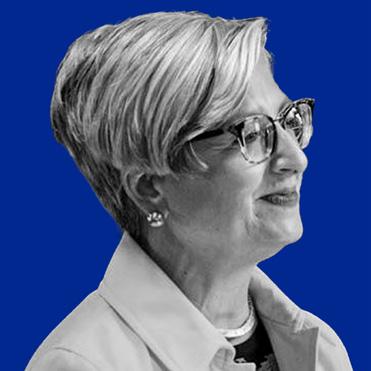
and Treasurer, she left in 2019 as Executive Vice President and Chief Financial Officer.
During her time there, The Home Depot grew from 400 stores to 2,200, with a revenue of nearly US$100bn and 450% increase in share price. Tomé has sat on multiple boards, including as Chairman of the Federal Reserve Bank of Atlanta; Chairman of the Metro Atlanta Chamber of Commerce; a Board Trustee for the Grady Memorial Hospital; on the Board of Directors of the Verizon Communications; the Atlanta Botanical Garden; and a member of The Committee of 200, The Business Council, and the International Business Council of the World Economic Forum.
She has been recognised by The Wall Street Journal as the number two Chief Financial Officer in 2012 and by Fortune Magazine as one of the top 50 most powerful women in business.
102 April 2023
Marion Gross
Global Chief Supply Chain Officer
McDonald’s
https://www.linkedin.com/in/marionkgross/
Supporting 37,000 restaurants and 64 million customers internationally, Marion Gross is Executive Vice President and Global Chief Supply Chain Officer at McDonald’s. Focusing on resiliency while activating industry-wide progress in safety, quality, and sustainability with her team, Gross has been with McDonald’s for nearly 30 years. Under her leadership, McDonald’s achieved Gartner Supply Chain Masters recognition for five consecutive years and is ranked in the Top 10 global supply chains.
Known for her consistent focus on developing strong, diverse teams – where senior leaders are 57% female and 43% people of colour – to drive business results, her remit encompasses food quality and safety, strategic sourcing and cost management, distribution, logistics and supply chain integration, sustainability, new product commercialisation and execution, field execution, and supplier business diversity.
Gross has been the recipient of many industry awards, named in the 100 Most influential Women in Supply Chain by Global Women Supply Chain Leaders (2021); a CNN Risk Taker (2019); Chicago United Business Leader of Color (2019); 50 Most Powerful Women in Corporate America by Black Enterprise (2015); and Most Powerful and Influential Women in Illinois by National Diversity Council (2012).
She actively supports causes that care for the homeless, underserved children, Special Olympics athletes, and veterans – including as Board ViceChair and an Executive Committee Member for the Ronald McDonald House Charities of Chicagoland and Northwest Indiana. Gross studied at Western Illinois University, gaining her Bachelor of Science in Distribution and Logistics, and is a graduate of the Thunderbird Leadership in the Global Enterprise Program and Leadership Greater Chicago Fellows Program.

7
TOP 10 supplychaindigital.com 103
6 Ivanka Janssen
Chief Supply Chain Officer
Philips
https://www.linkedin.com/in/ivankajanssen/
With over 20 years’ experience in varying sectors, Ivanka Janssen is a leader in global Supply Chain, consistently developing, growing, and digitally transforming international practices.
Having studied at Maastricht University, The University of Oslo, The University of Rochester’s Simon Business School, INSEAD, The University of Oxford, LFC, and MIT Sloan, Janssen is committed to evolution: “In supply chain, there will always be something that needs to be improved and there will always be something that may go wrong.”
Alongside a focus on digitisation – including the introduction of VR and AI to supply chain – Janssen believes in true diversity and equality: “Diversity is important because the more you can reflect the society in the work environment, the closer you are to where the consumers and customers are,” she says, boasting
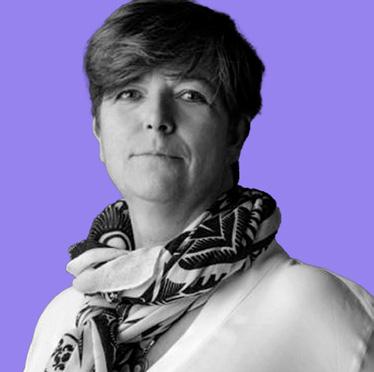
a leadership team that’s over 60% women, an increase from <20% in 2018 at Phillips, where she is Executive Vice President & Chief Supply Chain Officer. Before Phillips, she held positions including Vice President of Supply Chain Europe, Eastern Europe, and SubSaharan Africa at PepsiCo; Vice President of Global Route to Market Transformation at Diageo; and spent over two decades in varying positions at Altria.
Janssen is currently a Member of the Advisory Board at Heidrick and Struggles, and supports the Generation Games as a volunteer on the International Olympic Committee. Over a decade ago, she originated Female Leaders In Supply Chain, a network supporting women, and Co-Created Women In AI, where she runs annual masterclasses in Technology and Supply Chain Practice for women in developing markets.
104 April 2023
5 Tanja Dysli
Chief Supply Chain Officer
IKEA
https://www.linkedin.com/in/tanja-dysli-06112558/
Tanja Dysli is Swedish global homeware giant Ikea’s Chief Supply Chain Officer, having joined the company in 2003 as a Supply Chain Specialist. Ikea – which was founded in 1943 by then 17-year-old Ingvar Kamprad as a sales business – has gained international fame from its affordable, sleek products that are made possible through effective supply chain management: global sourcing allows IKEA to access a larger range of products at a lower cost, while automation of processes helps to reduce costs and improve efficiency. Dysli is at the heart of this, ensuring that the Supply Chain is effective and efficient. “Ikea is on a journey to transform all our stores into fulfilment centres,” Dysli says. “Most of them are getting rebuilt right now as we speak.”
The transformation stems from an investment in demand-sensing capabilities, allowing Ikea to gain a better understanding of its physical storage capacity
and staffing needs in advance. Over 15 years, her roles with the world’s largest furniture retailer have centred around supply chain, retail logistics, business navigation, and store management, allowing her a complete, well-rounded view of the business.
Dysli is Philadelphia-based, holds a bachelor’s degree in Business Management, Marketing, and Related Support Services from the University of Applied Sciences in Olten, Switzerland, and speaks fluent Swedish, German, and English, along with some Spanish and French. She contributes to industry events and publications, more recently as a speaker at Manifest: The Future of Logistics 2023 and Shop Talk 2022.

TOP 10 supplychaindigital.com 105
4 Linda Venables
CSCO, PwC Australia
PwC
https://www.linkedin.com/in/linda-venables/
Logistics veteran Linda Venables is an international executive with 35 years’ experience building and leading teams across Retail, FMCG, Industrial, and Third-Party Logistics sectors. She is the first Chief Supply Chain Officer heading Business Consulting and Services at PwC Australia, a network spanning 155 countries with over 327,000 people, each of whom is committed to delivering quality assurance, advisory, and tax services.
This is alongside her services as an Independent Supply Chain Consultant and role as Deputy Chain of environmental community Noosa Biosphere Reserve Foundation.
“Across key markets, senior executives are focused now more than ever to understand, invest, and better control their supply chains. We intend to provide our clients with the expertise and advice they
need to confidently make critical investments and improvements,” Venables said. A rich employment history, Venables has held roles including Chief Logistics Officer in Supermarkets, Liquor and Convenience at Metcash, Director of IT and Supply Chain at Dick Smith Electronics, Business Development Manager at Woolworths Limited, and Business Director at DHL.
Her volunteering and charitable work includes sitting as a Non-Executive Director and Member of ARC for Foodbank Australia, and her work pursuing the professionalisation of supply chain management in Australia.
She holds a Bachelor of Science in Metallurgical Engineering from the University of Birmingham, a master’s in Manufacturing Management from Cranfield School of Management, a qualification in Company Direction and Advanced Risk Management from the Australian Institute of Company Directors.
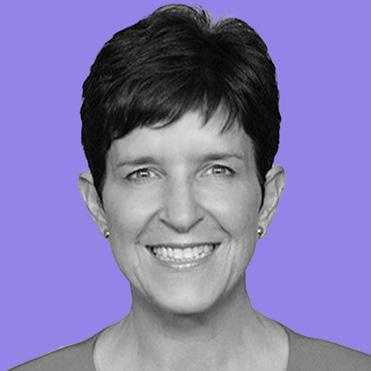
TOP 10 106 April 2023


Learn how one of the largest forklift manufacturers accelerated innovation with Infor CloudSuite®. The Journey to Smart Manufacturing starts with a Cloud-enabled Modern ERP © Copyright 2022. Infor. All right reserved. infor.com Watch customer story





Digital Content for Digital People THE TOP 100 WOMEN IN SUPPLY CHAIN OUT NOW Read now

110 April 2023
Roxanne Flanagan
CSCO Walgreens
https://www.linkedin.com/in/ roxanne-flanagan-229b5761/
Roxanne Flanagan started at Walgreens, the second-largest pharmacy chain in the US, in 1993 as a management intern. Three decades later, she is Senior Vice President, Chief Supply Chain Officer.
Flanagan works with her teams to stay in-step with consumers, utilising everything from same-day delivery, partnerships with thirdparty delivery apps, micro-fulfilment centres, and drones: “I don’t know what the future is going to hold for Walgreens or for any retailer, as far as drones go,” she said. “We’re all kind of experimenting. We want to be innovative, test all the new options out there.”
The company is also focusing on microfulfilment centres to fill prescriptions, allowing the pharmacists to focus on customer engagement to refocus their workload. Last year, around 60% of prescriptions were filled through automation, with the chain hoping to expand that from 9 to
22 facilities this year. “Even though we are 120 years old, we’re not going to be complacent,” says Flanagan. “We are very innovative, always trying new things and always thinking about the future.”
Flanagan holds a bachelor’s degree in Pharmacy from Purdue University, a master’s in Business Administration from the University of Phoenix, and a Master of Science in Logistics, Materials, and Supply Chain Management from Loyola University Chicago’s Quinlan School of Business. Alongside her pioneering work in Supply Chain management, Flanagan is a strong advocate for Walgreens’ inclusive work environment efforts, including the creation of its Transitional Work Group Program and Retail Employees with Disabilities Initiative to create even more opportunities for people with disabilities.
“Leading one of the nation’s largest supply chain organisations is fascinating. I’m inspired by how our teams collaborate; supply chain is teamwork, and that’s what I love most about it”
3
TOP 10 supplychaindigital.com 111

112 April 2023
Karen Jordan
https://www.linkedin.com/in/karen-jordan-47b0177
As Chief Supply Chain Officer at PepsiCo, Karen Jordan leads the North American Supply Chain for PepsiCo’s beverage business – a portfolio of billion-dollar brands such as Pepsi, Mountain Dew, Gatorade, Starbucks, and Rockstar.
Jordan has a Bachelor of Science in Engineering from Princeton University, spent over nine years at Procter & Gamble, then joined Pepsi in 2002 as a Supply Chain Operations Manager.
Over the next two decades, she held multiple managerial positions at Pepsi, and gained her master’s degree in Transformative Leadership and Social Change from Maryland University of Integrative Health, as well as a certificate in Executive Education: Strategy Master Class from The University of Chicago Booth School of Business.
She is now known for collaboratively driving benchmark productivity and service results in an FMCG retail environment, utilising her on-the-ground plant management experience to deliver world-class safety, quality, service, sustainability, and cost, as well as deploying innovative employee engagement solutions that increase diversity, retention, and engagement of leaders in frontline to senior executive positions.
Jordan was recently a key voice in PepsiCo’s ‘She is PepsiCo’ campaign, which includes 28 personalised delivery trucks for frontline female employees:
“Women play a valuable role in PepsiCo’s frontline, and the opportunity for them to continue to power our supply chain is an opportunity for both PepsiCo and the communities we serve,” says Jordan. “History has shown us that women have the ability to transform industries, so it’s exciting to see progress and to be able to recognise these women across North America on our trucks, one of our most widely-seen assets.”
“I was profoundly moved by the possibility of becoming one of the first African-American female plant managers in my company, an extension of my aunt’s dreams two generations before me”
CSCO PepsiCo
/ 2
TOP 10 supplychaindigital.com 113

114 April 2023
Kathryn Wengel
Chief Global Supply Chain Officer & VP Johnson & Johnson
https://www.linkedin.com/in/
Our 2023 Top Woman in Supply Chain is Kathryn Wengel, Executive Vice President, Chief Technical Operations and Risk Officer, and a member of the Company’s Executive Committee for healthcare company Johnson & Johnson.
With more than three decades’ experience in leadership, she now leads key technical operations functions, including: Procurement, Engineering and Property Services, Sustainability and cross-sector Supply Chain teams, and critical risk functions, under which Quality & Compliance, Health Care Compliance, Environmental Health & Safety, Global Security and Global Brand Protection are in her remit. Under her leadership, Johnson & Johnson has become the only healthcare company ever ranked among the top five on the Supply Chain Top 25 list by Gartner, Inc.
Wengel also serves as a Member of the Board of Directors at leading global life sciences company Laboratory Corporation of America Holdings, is the Vice Chair of the Board of Directors at the National Association of Manufacturers in the US, Chair of the Board of GS1 Global, a nonprofit that develops and maintains global supply chain standards, as well as executive sponsor for the Women’s Leadership & Inclusion initiative and the Women in Science, Technology, Engineering, Math, Manufacturing, and Design (WiSTEM2D) programme.
In 2015, Wengel received the National Association of Female Executives’ Women of Excellence Award, was recognised in 2019 by the Council of Supply Management Professionals (CSCMP) with its lifetime Distinguished Service Award and elected to the Supply Chain Hall of Fame, the industry’s top individual supply chain honour. She holds a Bachelor of Science degree in Civil Engineering and Operations Research from Princeton University.
“Even with a supply chain the size of ours, we are constantly innovating by investing in our people and in technology to meet the needs of patients, consumers and customers.”
kathryn-wengel-10b74498/ 1
TOP 10 supplychaindigital.com 115
Business Design Centre, London



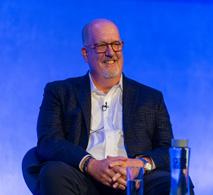













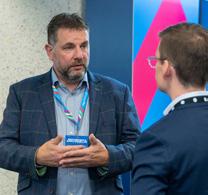

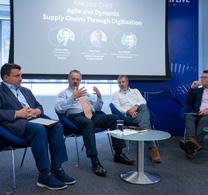










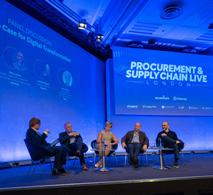






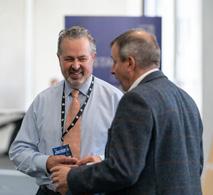













2023
26 - 27 September
GET YOUR PASS SPONSORSHIPS A BizClik Event Join the Event Disrupting Procurement & Supply Chain





















































































































 WRITTEN BY: SEAN ASHCROFT PRODUCED BY: CRAIG KILLINGBACK
WRITTEN BY: SEAN ASHCROFT PRODUCED BY: CRAIG KILLINGBACK










 JON WILLESCROFT CHIEF PROCUREMENT OFFICER, G4S
JON WILLESCROFT CHIEF PROCUREMENT OFFICER, G4S













 James McDowell
James McDowell



 AD FEATURE
WRITTEN BY: TOM SWALLOW
AD FEATURE
WRITTEN BY: TOM SWALLOW













 Because Insight Beats Hindsight
Because Insight Beats Hindsight









 Logging and land clearing of rainforest for palm oil industry
Logging and land clearing of rainforest for palm oil industry




 WATCH NOW
WATCH NOW


 WRITTEN BY: SEAN ASHCROFT
WRITTEN BY: SEAN ASHCROFT















 WRITTEN BY: CHARLIE KING
WRITTEN BY: CHARLIE KING


































































































